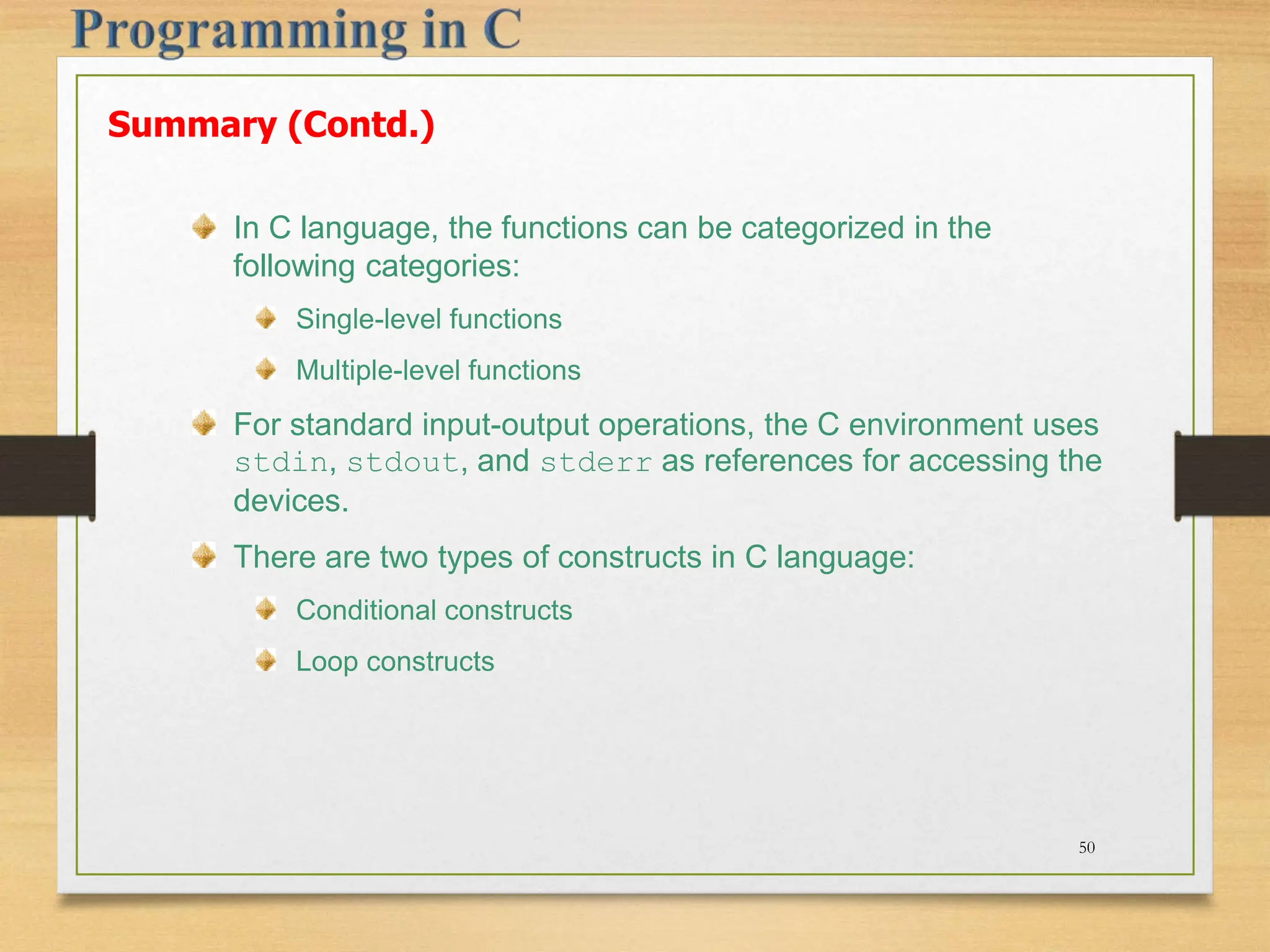This document provides an overview of key concepts in the C programming language, including: - The benefits and features of C like low-level access, structured programming, and modular programming. - The basic data types in C like char, int, float, and how to define variables of these types. - How C functions are structured with single-level and multiple-level functions, and how to identify errors in function definitions. - The input-output functions in C like getchar(), putchar(), gets(), puts() for character- and string-based I/O. - The conditional and loop constructs available in C for control flow.
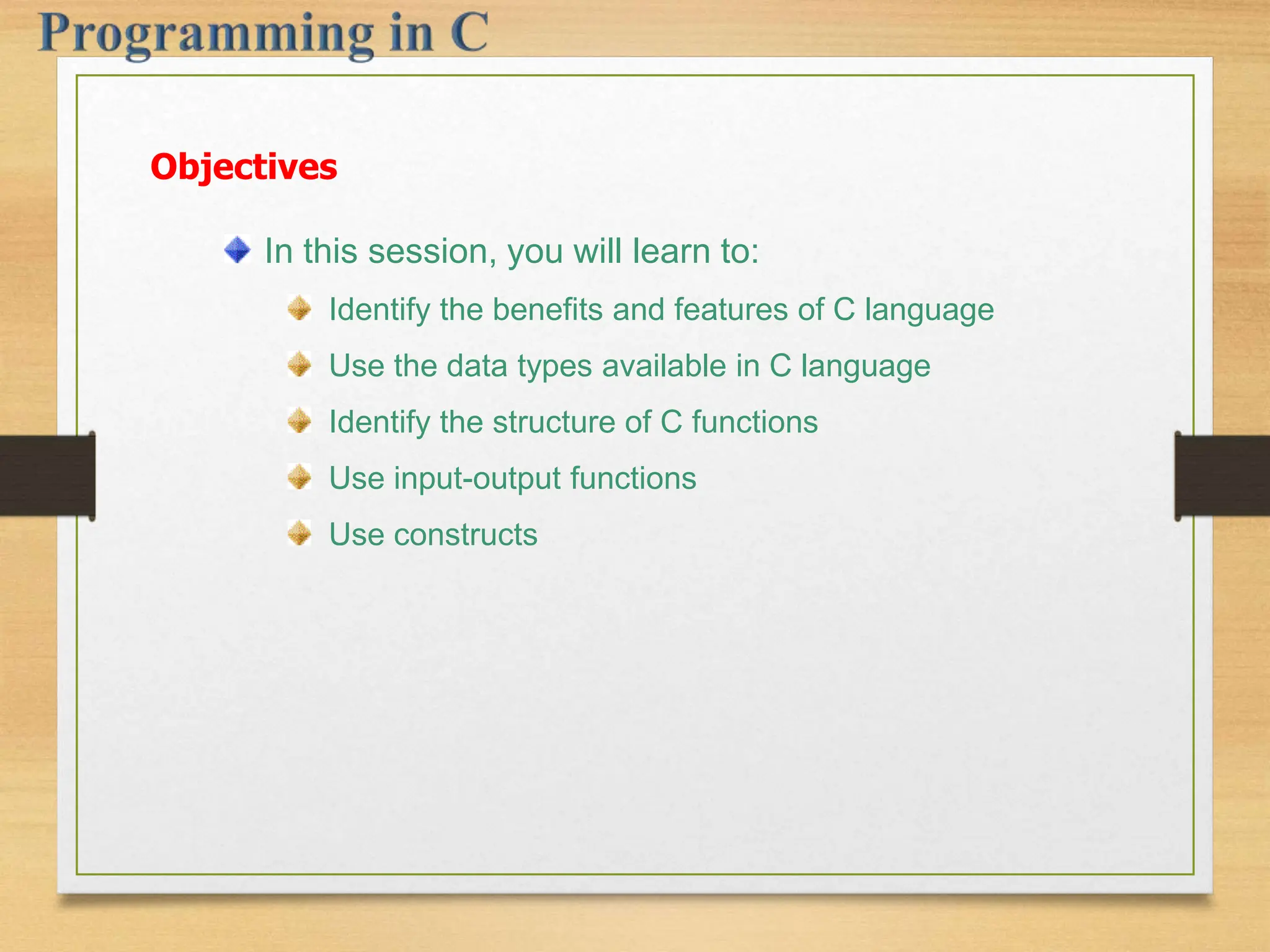
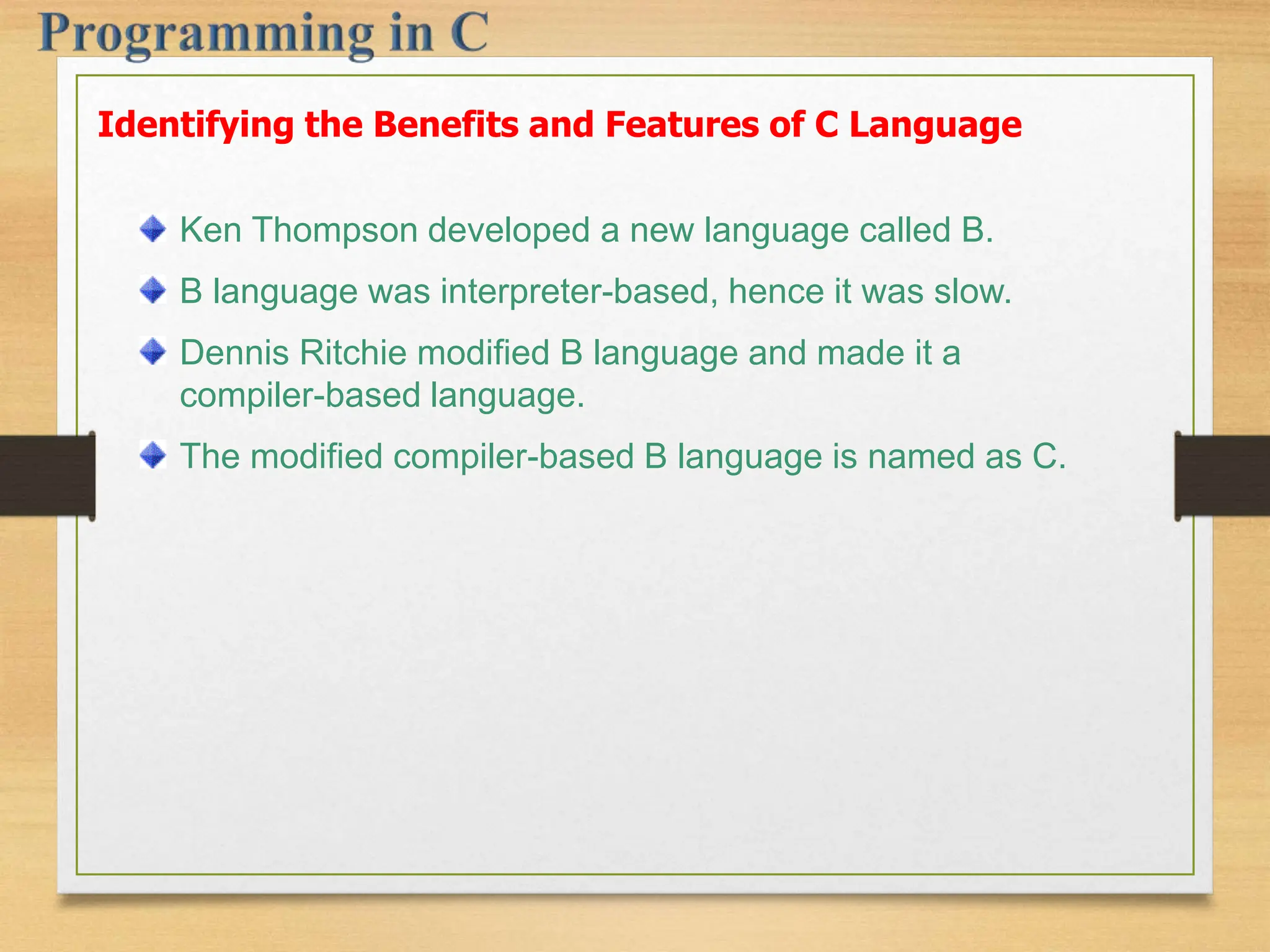
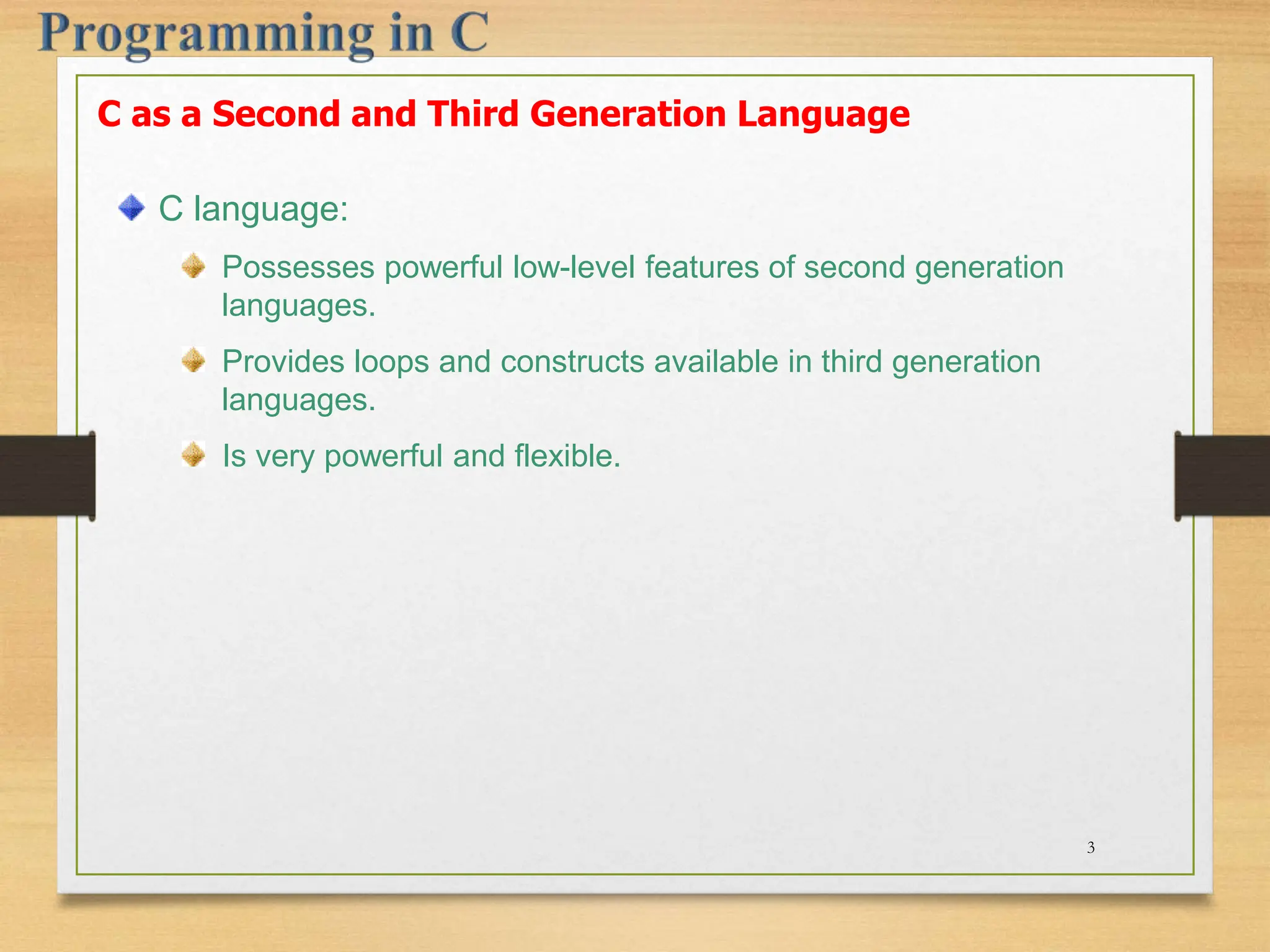
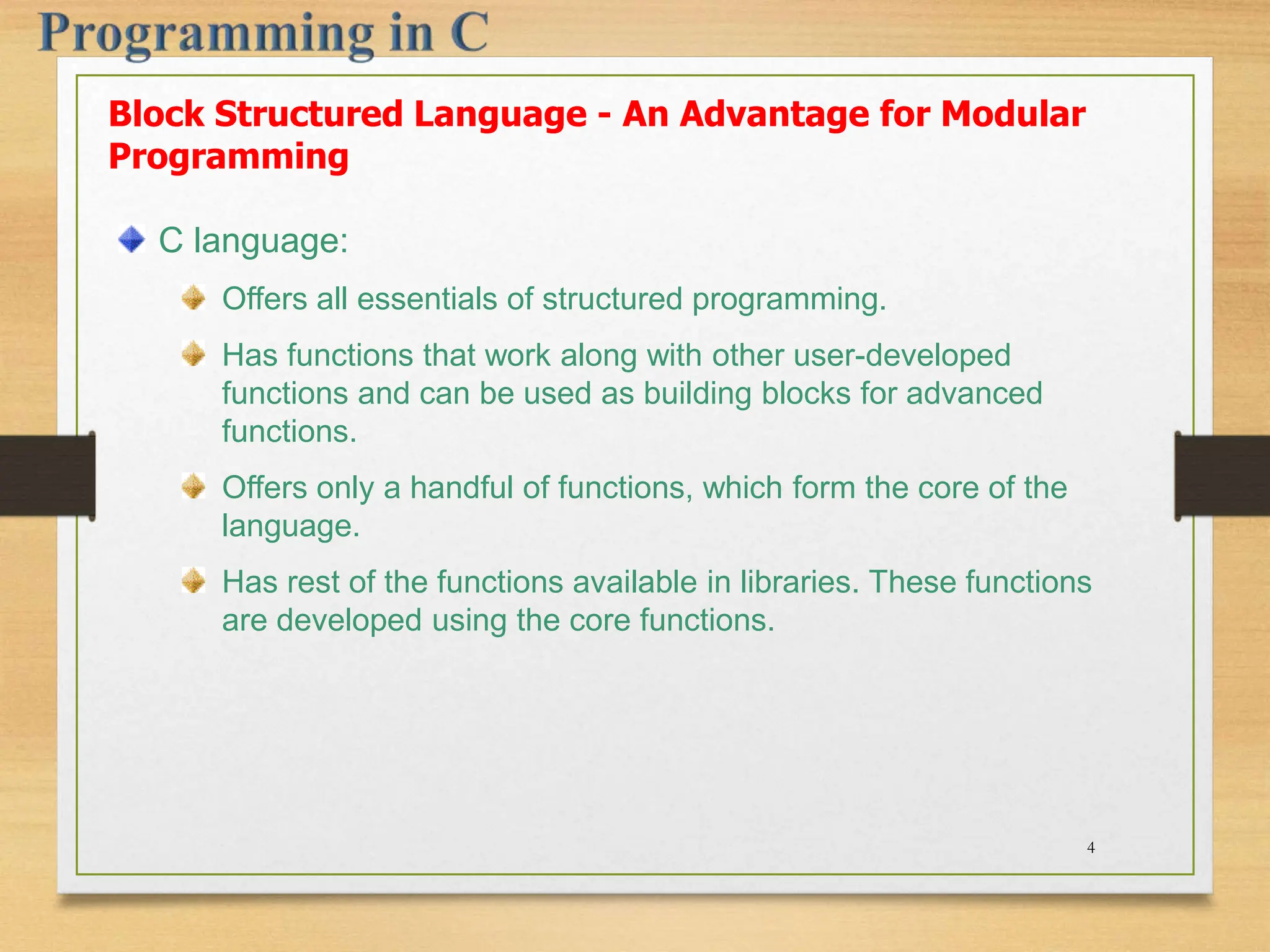
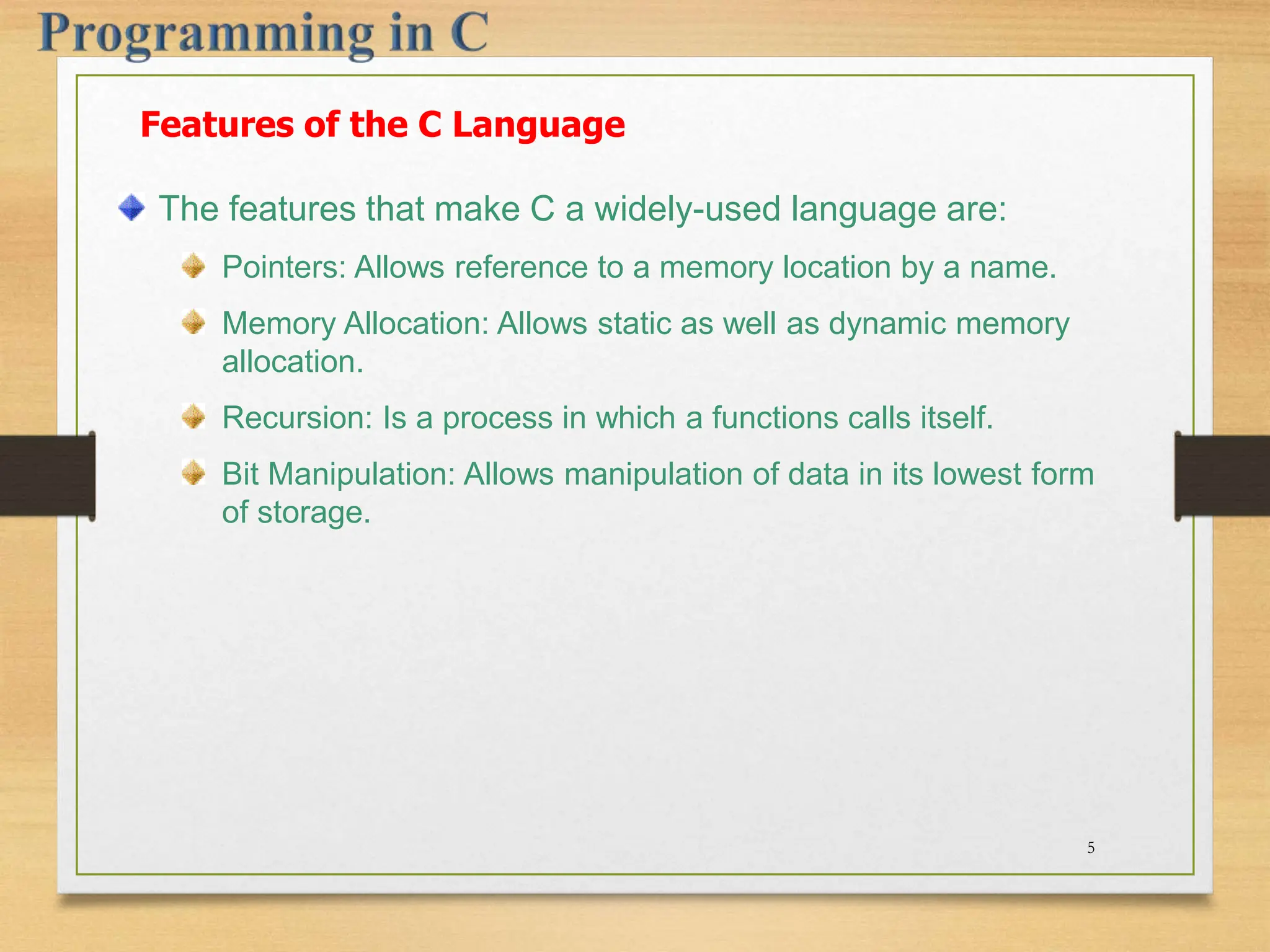
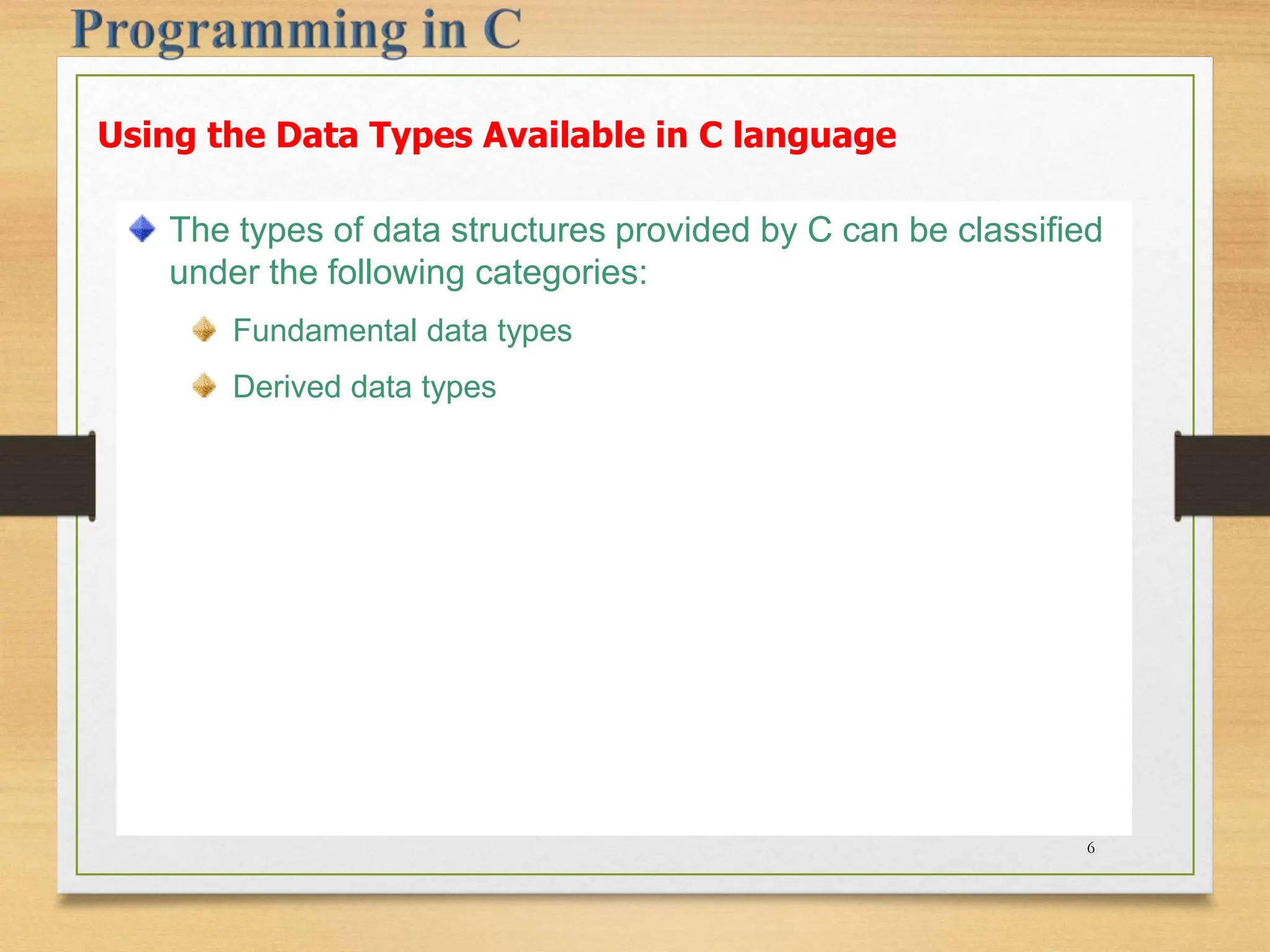
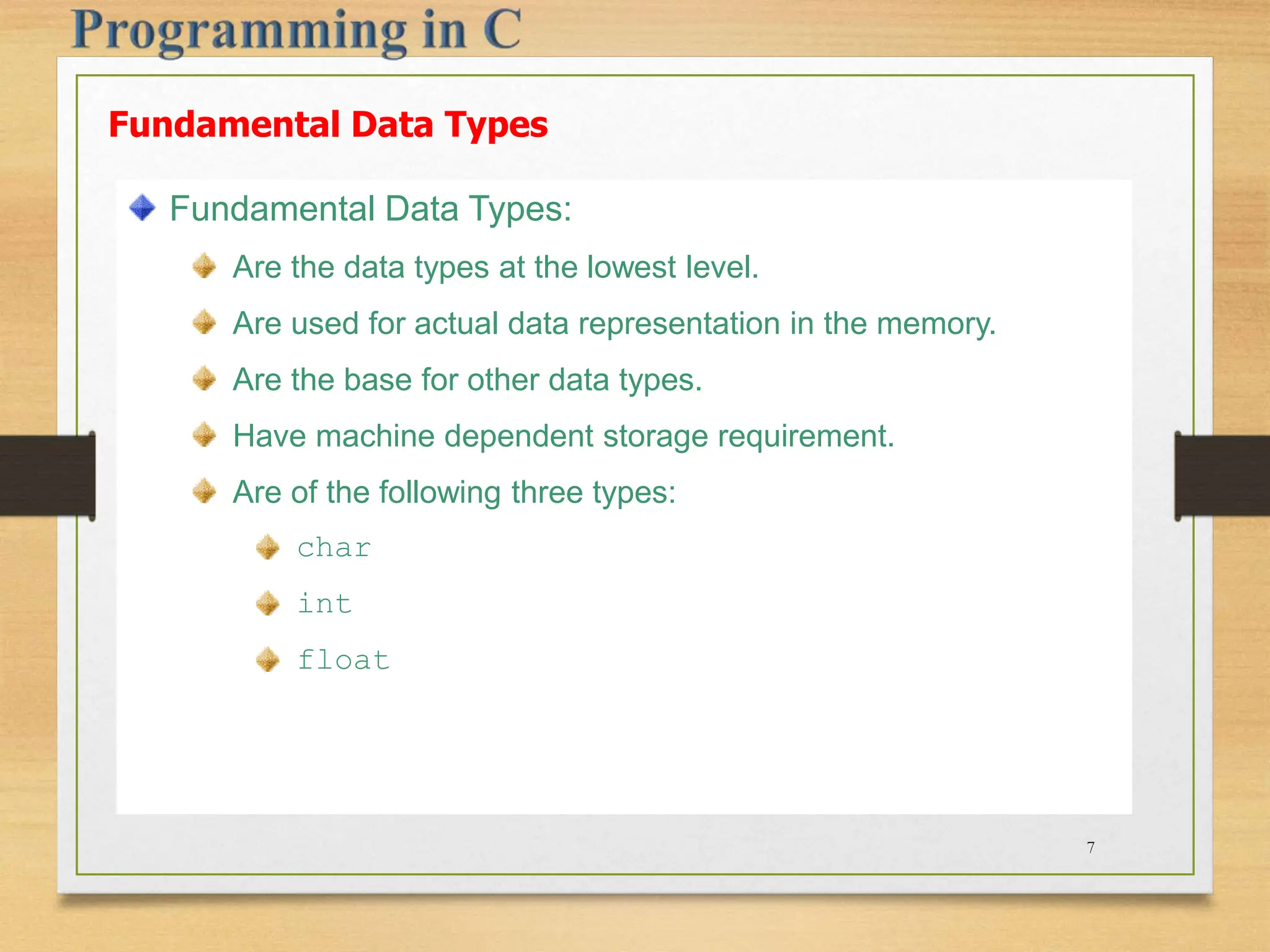
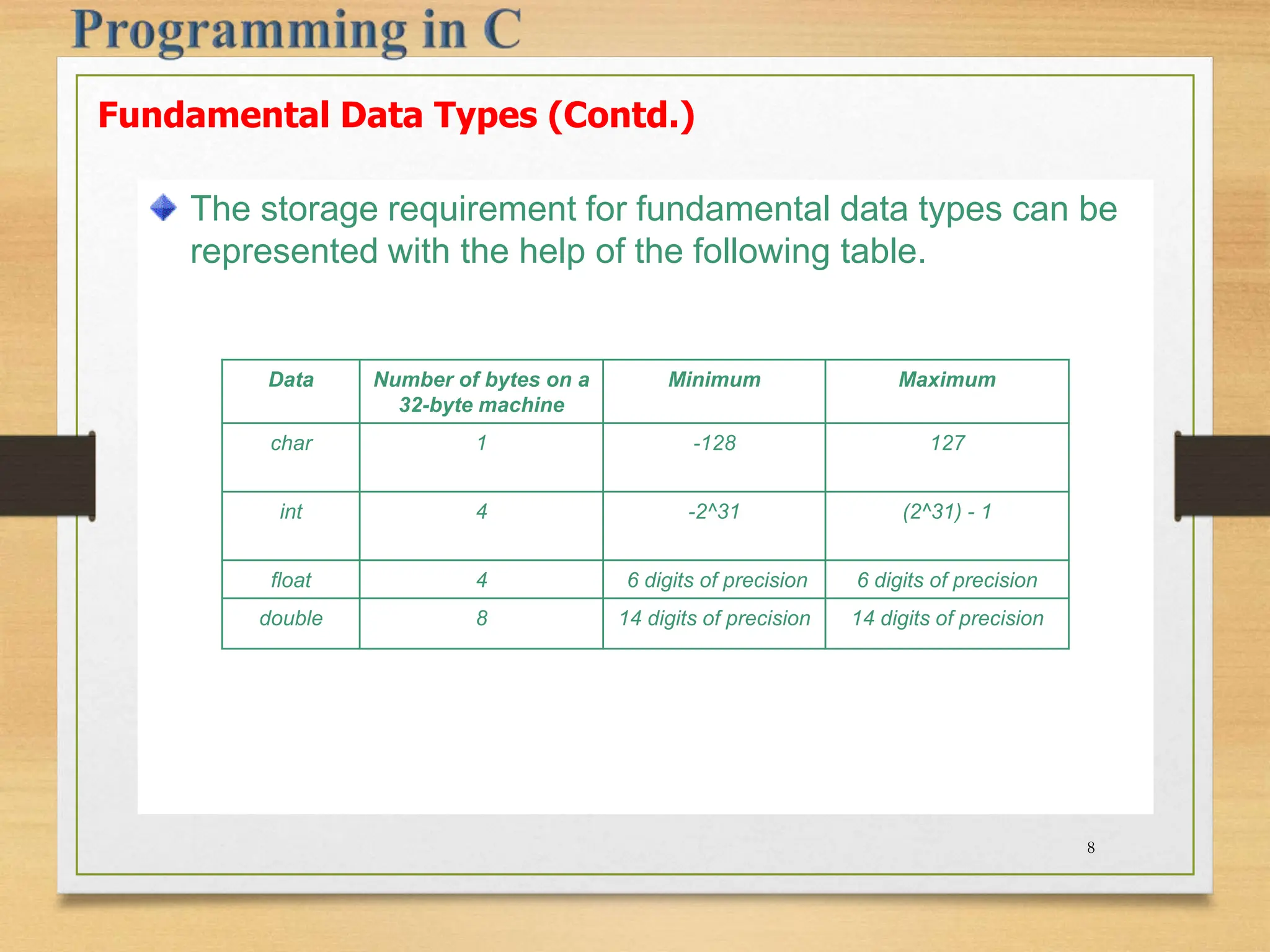
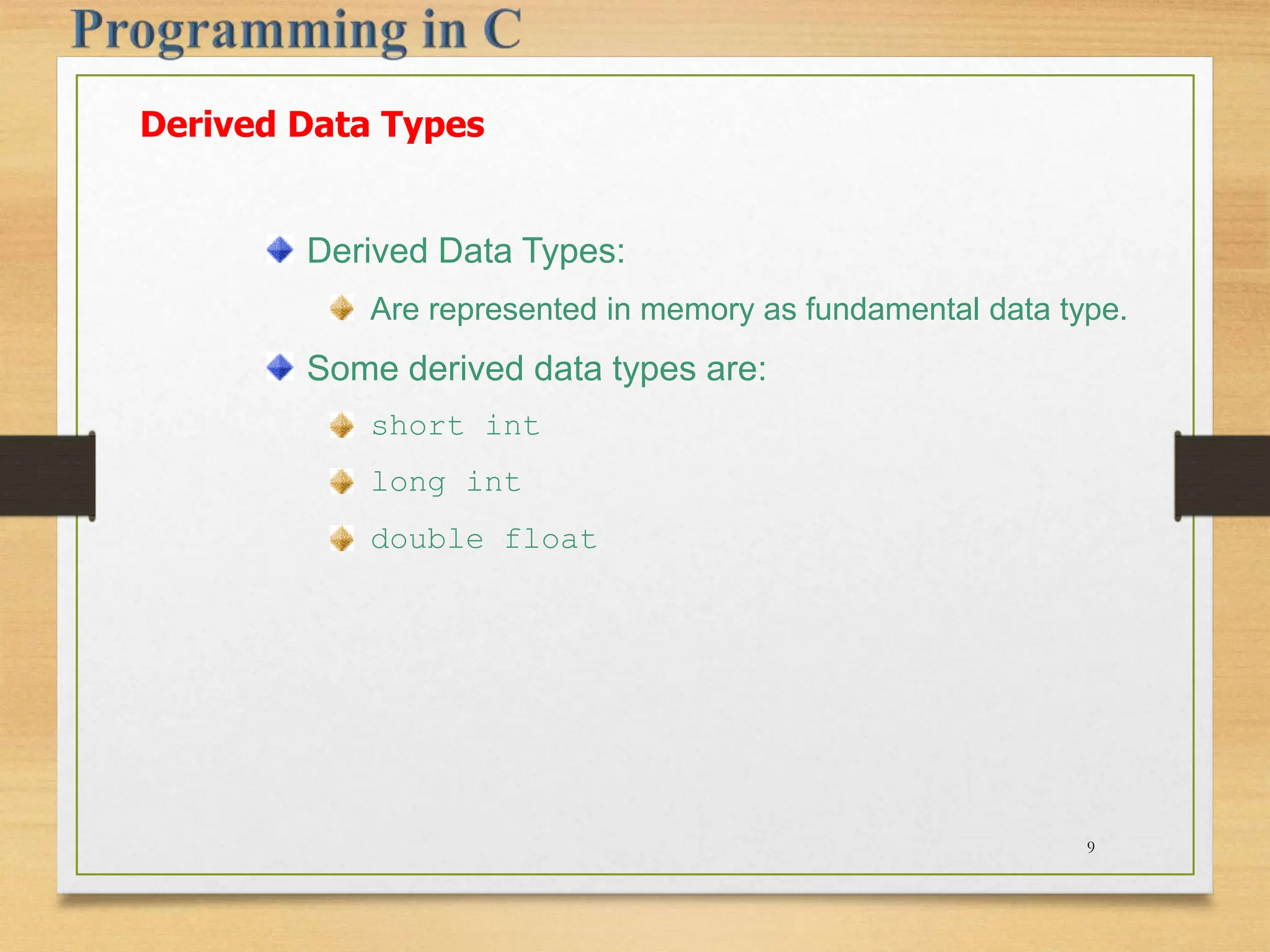
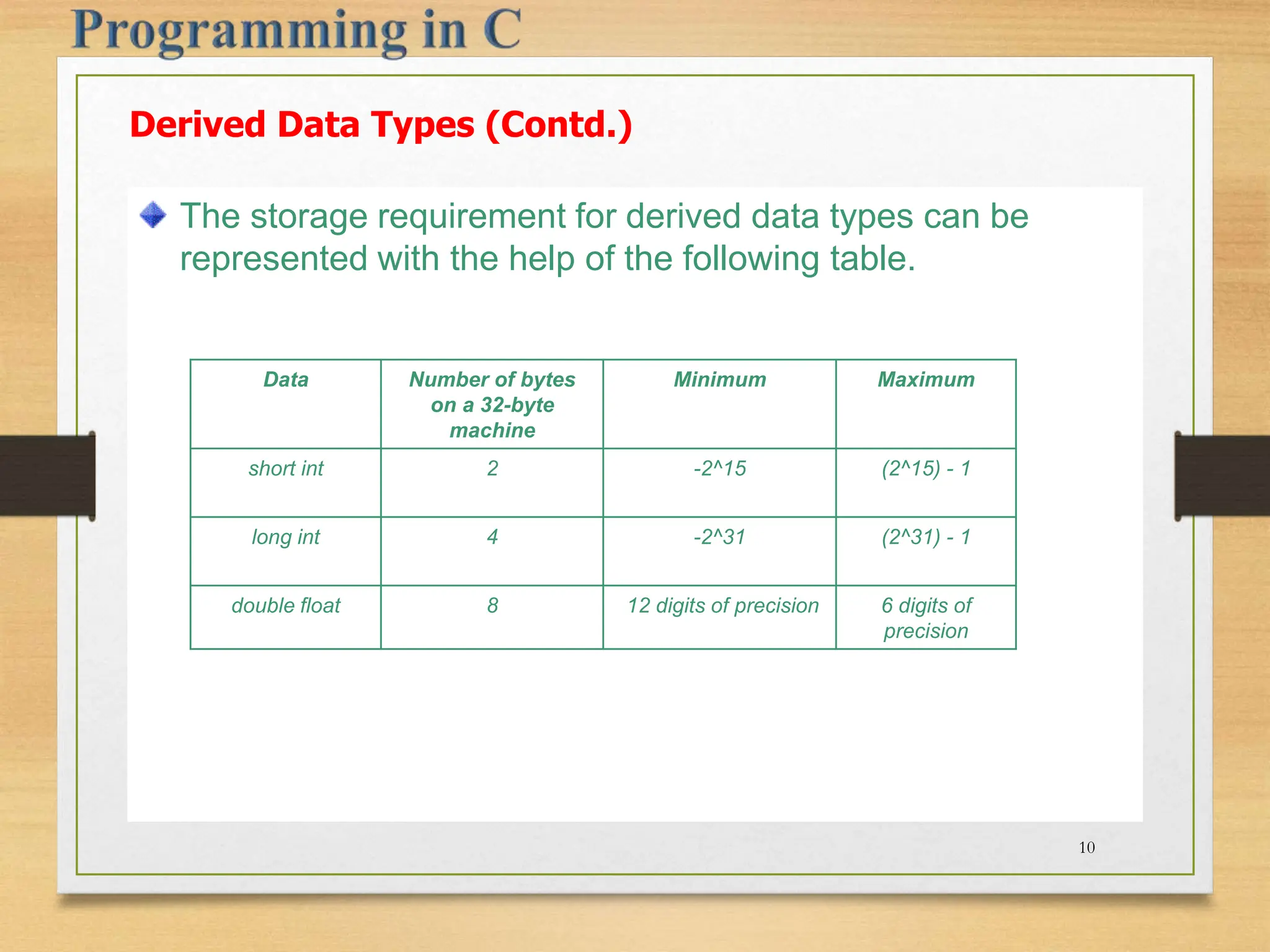
![Defining Data The syntax for defining data is: [data type] [variable name],...; Declaration is done in the beginning of a function. Definition for various data types is shown in the following table. Data definition Data type Memory defined Size (bytes) Value assigned char a, c; char a c 1 1 - - char a = 'Z'; char a 1 Z int count; int count 4 - int a, count =10; int a count 4 4 - 10 float fnum; float fnum 4 - float fnum1, fnum2 = 93.63; float fnum1 fnum2 4 4 - 93.63 11](https://image.slidesharecdn.com/session01-240315050309-ecfc5ec5/75/C-Programming-ppt-for-beginners-Introduction-11-2048.jpg)
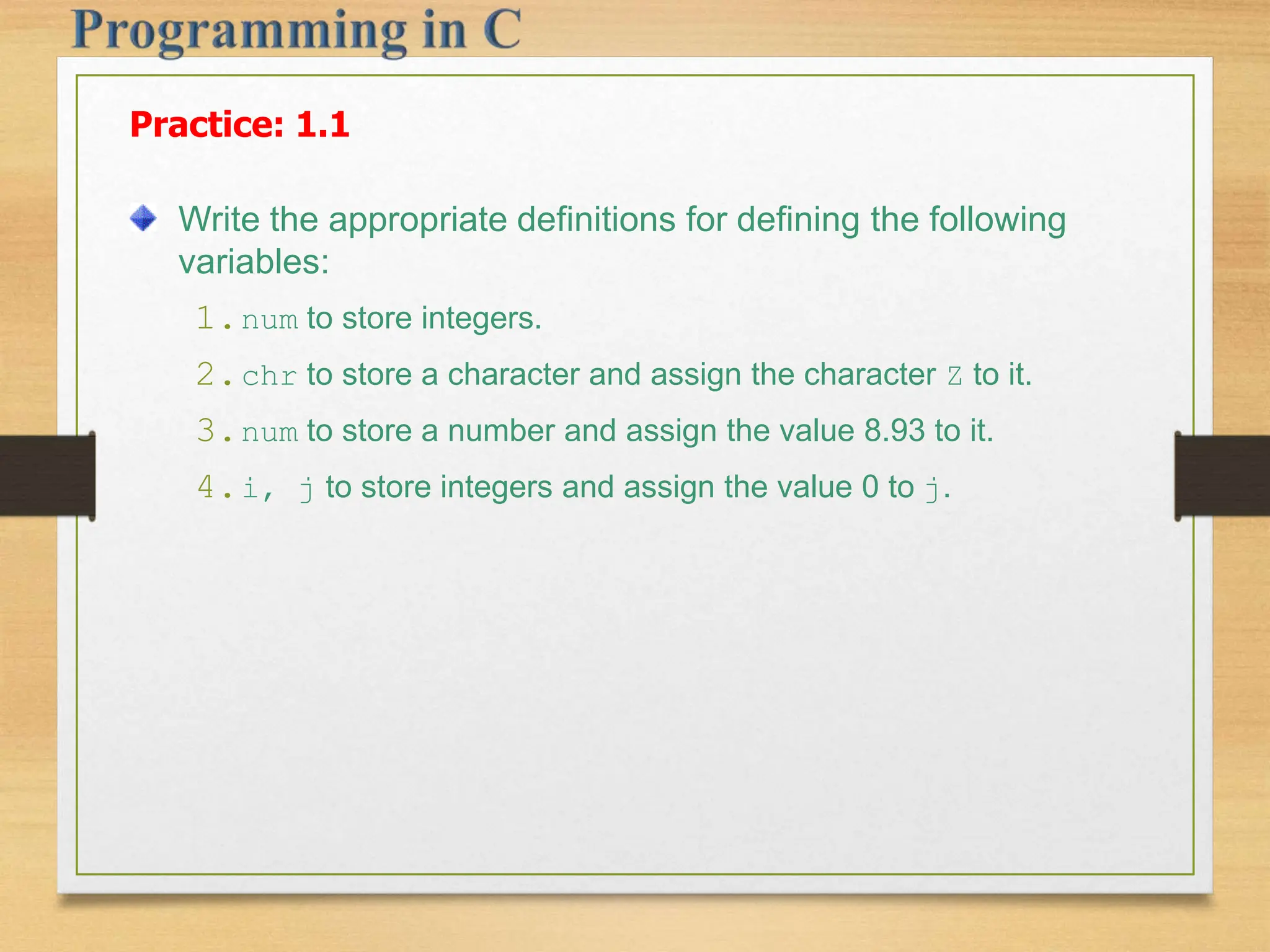
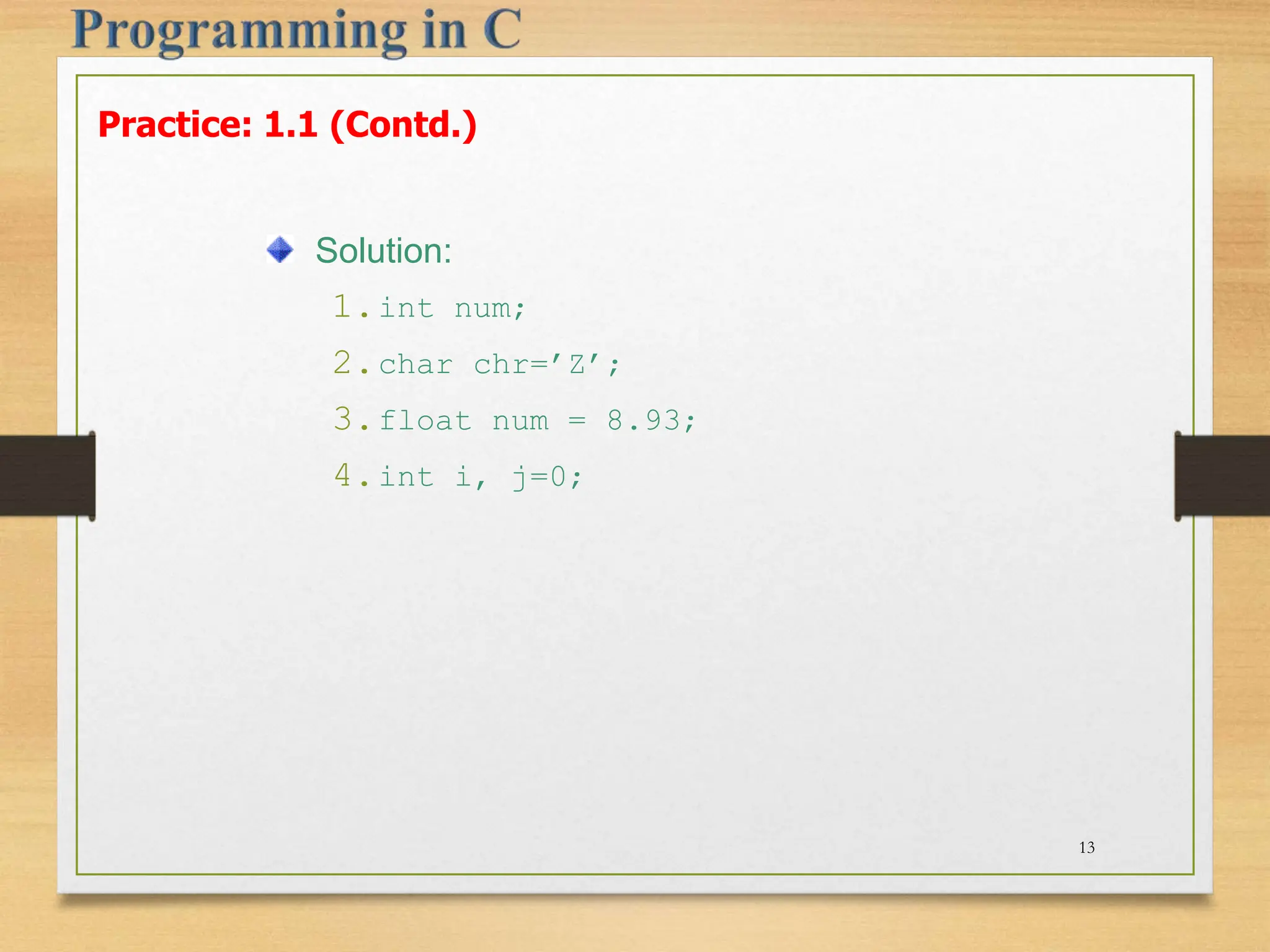
![Defining Strings: Syntax: char (variable) [(number of bytes)]; Here number of bytes is one more than the number of characters to store. To define a memory location of 10 bytes or to store 9 valid characters, the string will be defined as follows: char string [10]; Defining Data (Contd.) 14](https://image.slidesharecdn.com/session01-240315050309-ecfc5ec5/75/C-Programming-ppt-for-beginners-Introduction-14-2048.jpg)
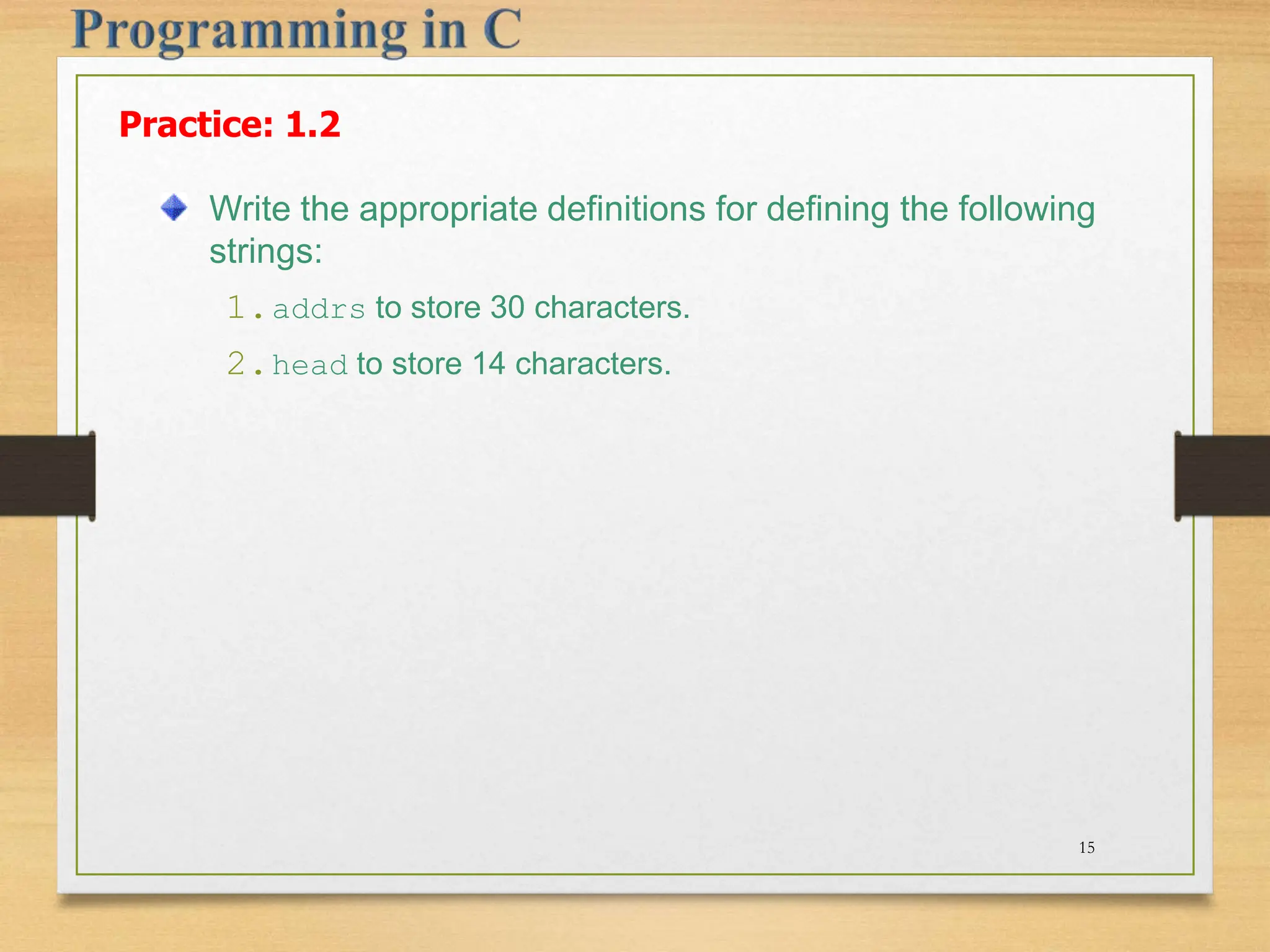
![Practice: 1.2 (Contd.) Solution: 1.char addrs[31]; 2.char head[15]; 16](https://image.slidesharecdn.com/session01-240315050309-ecfc5ec5/75/C-Programming-ppt-for-beginners-Introduction-16-2048.jpg)
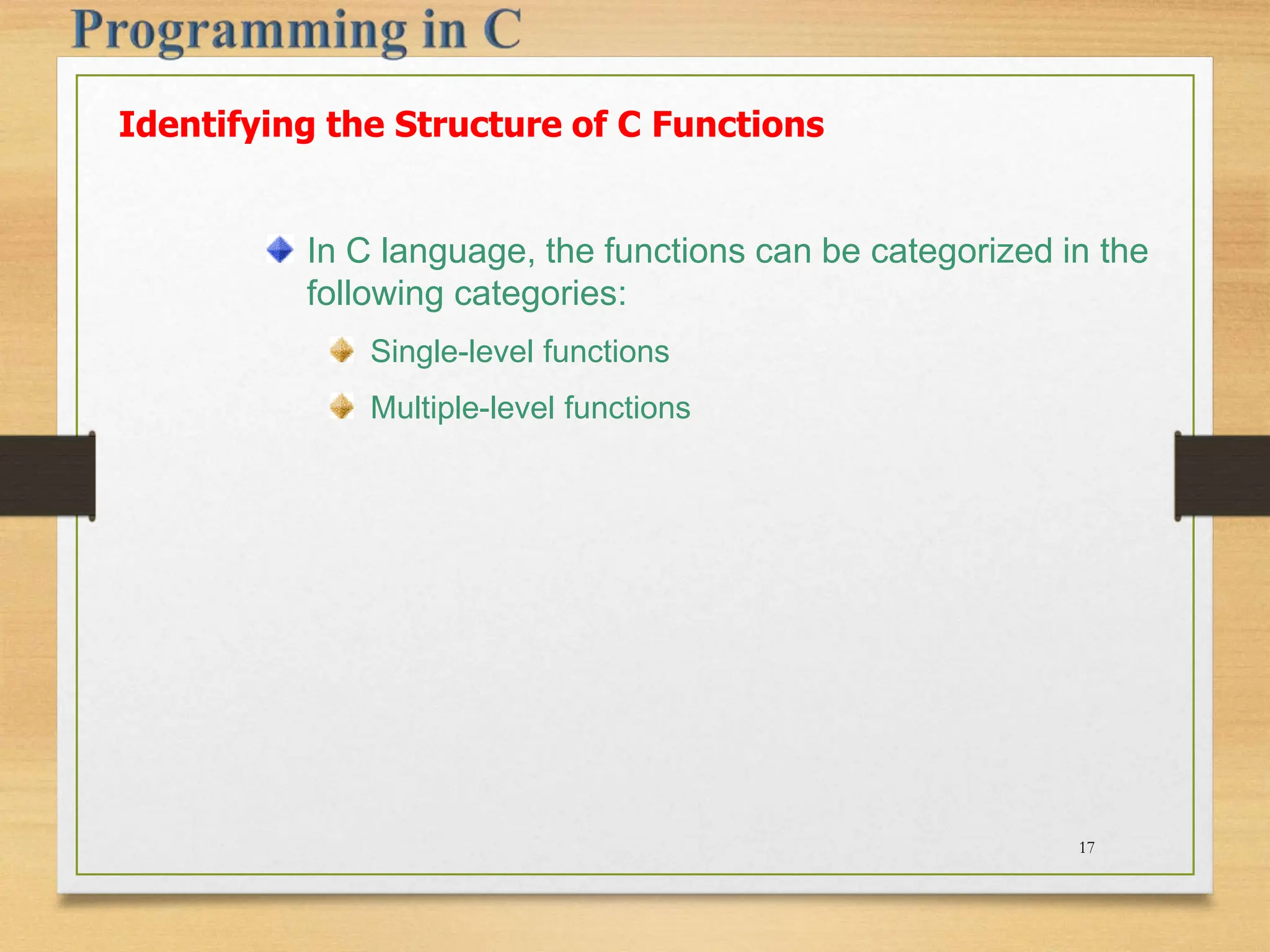
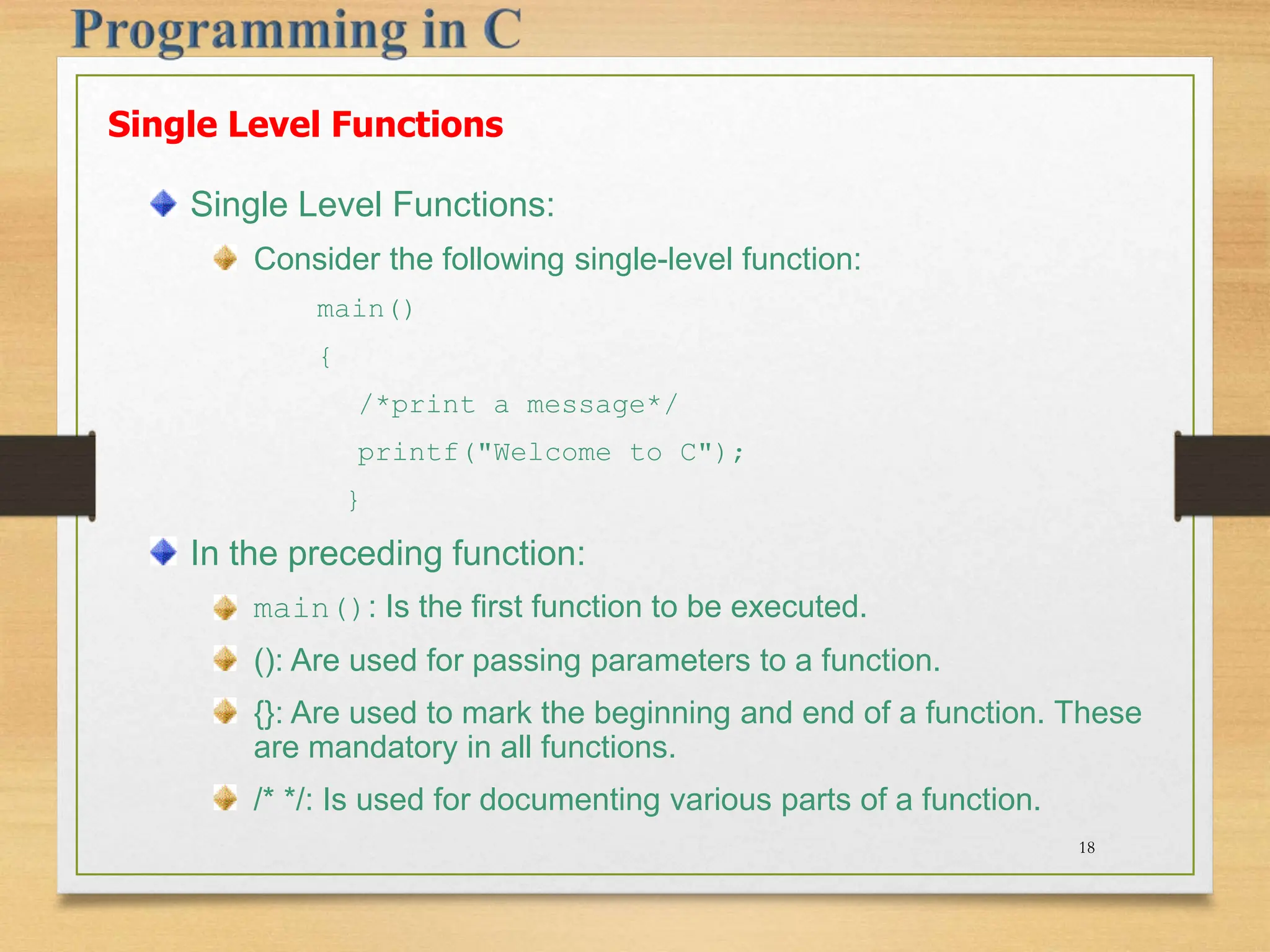
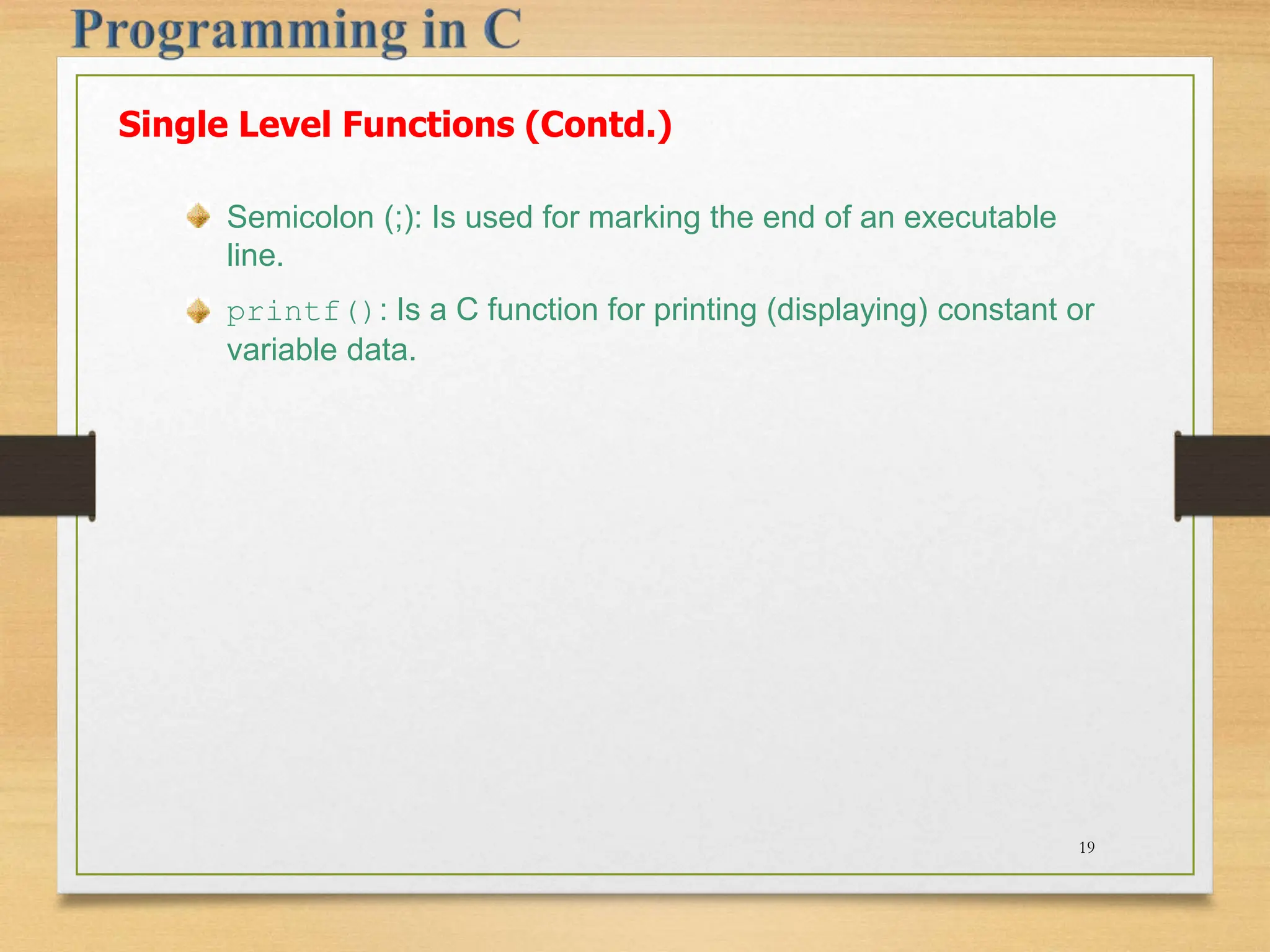
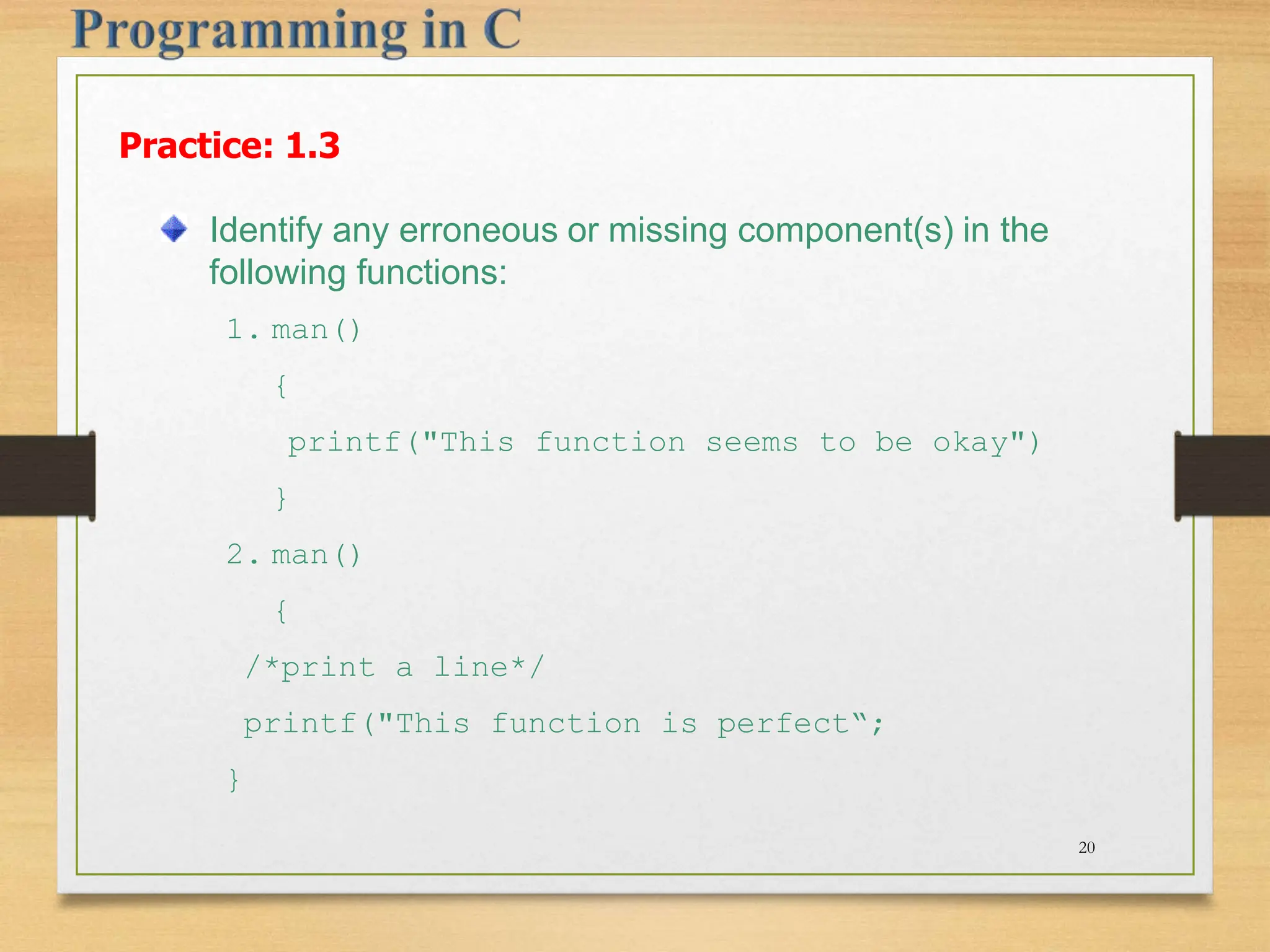
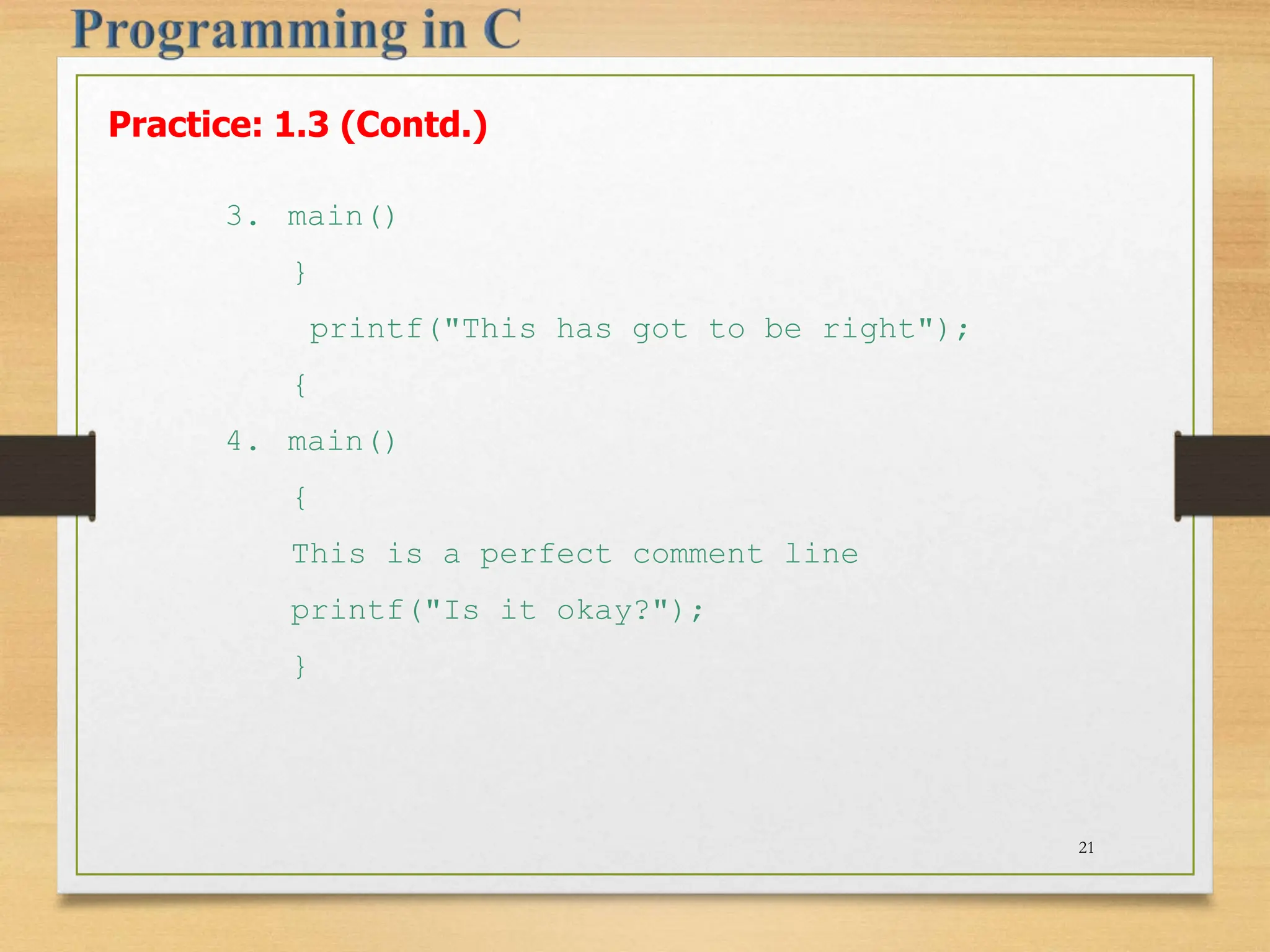
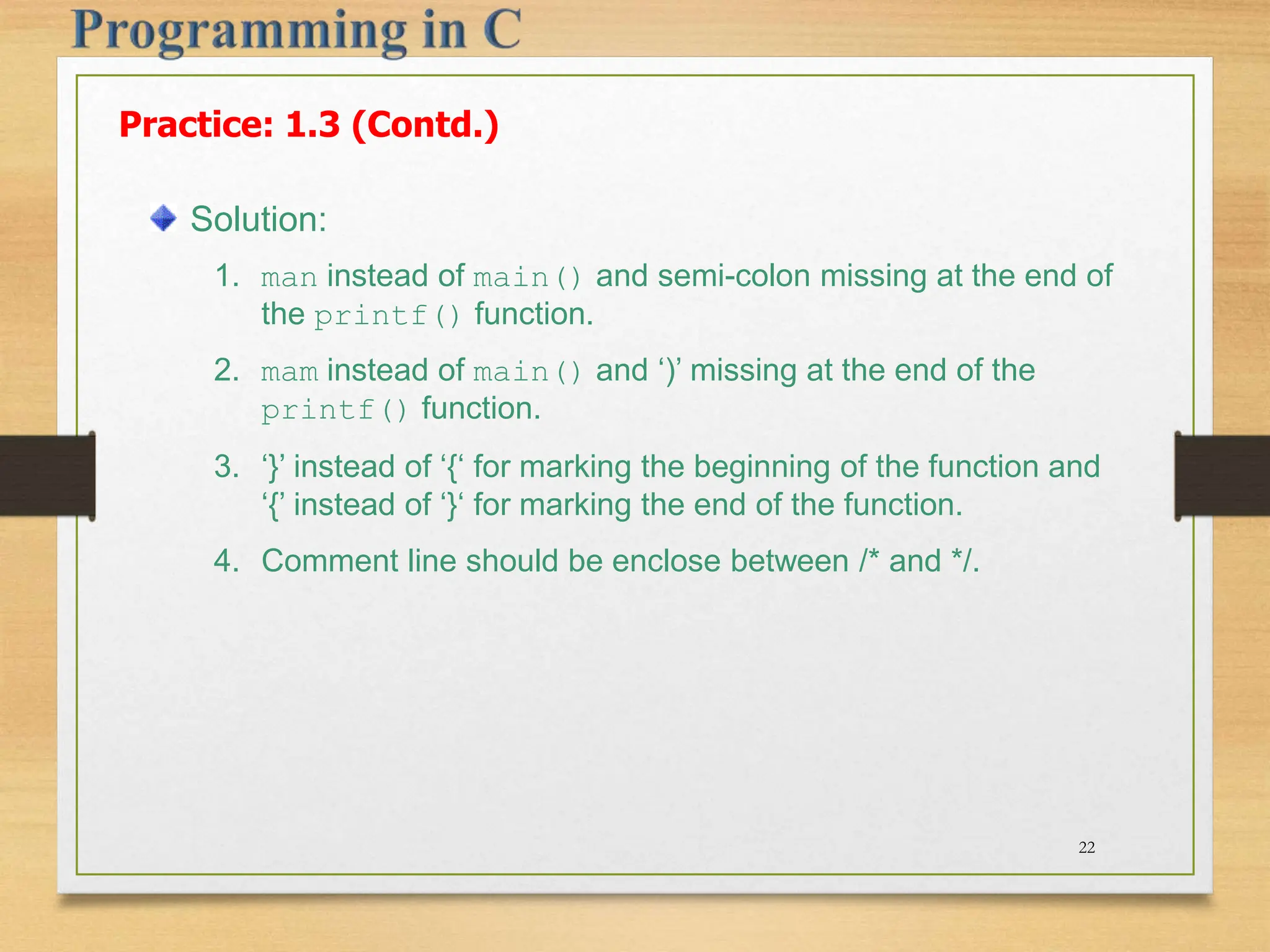
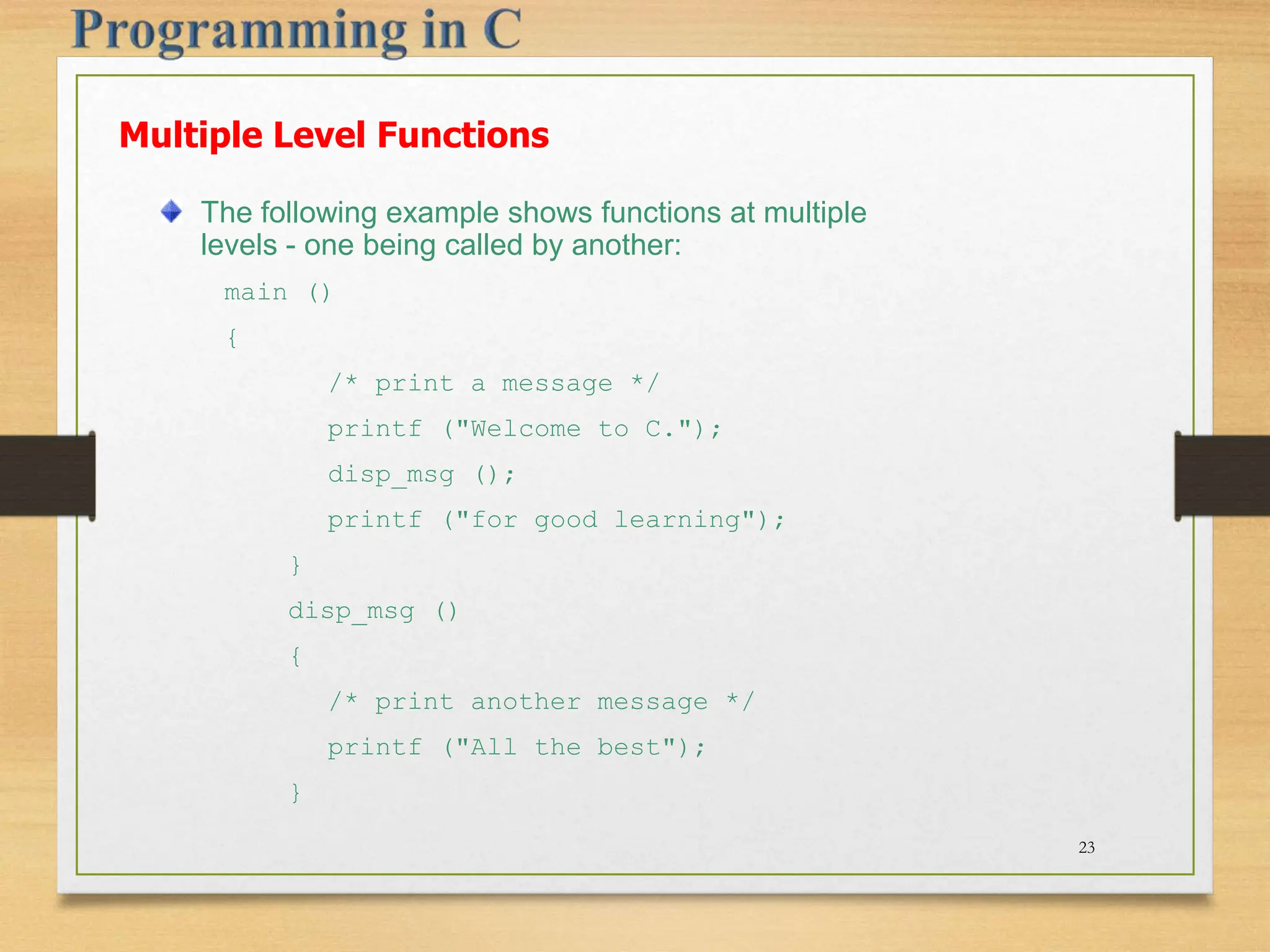
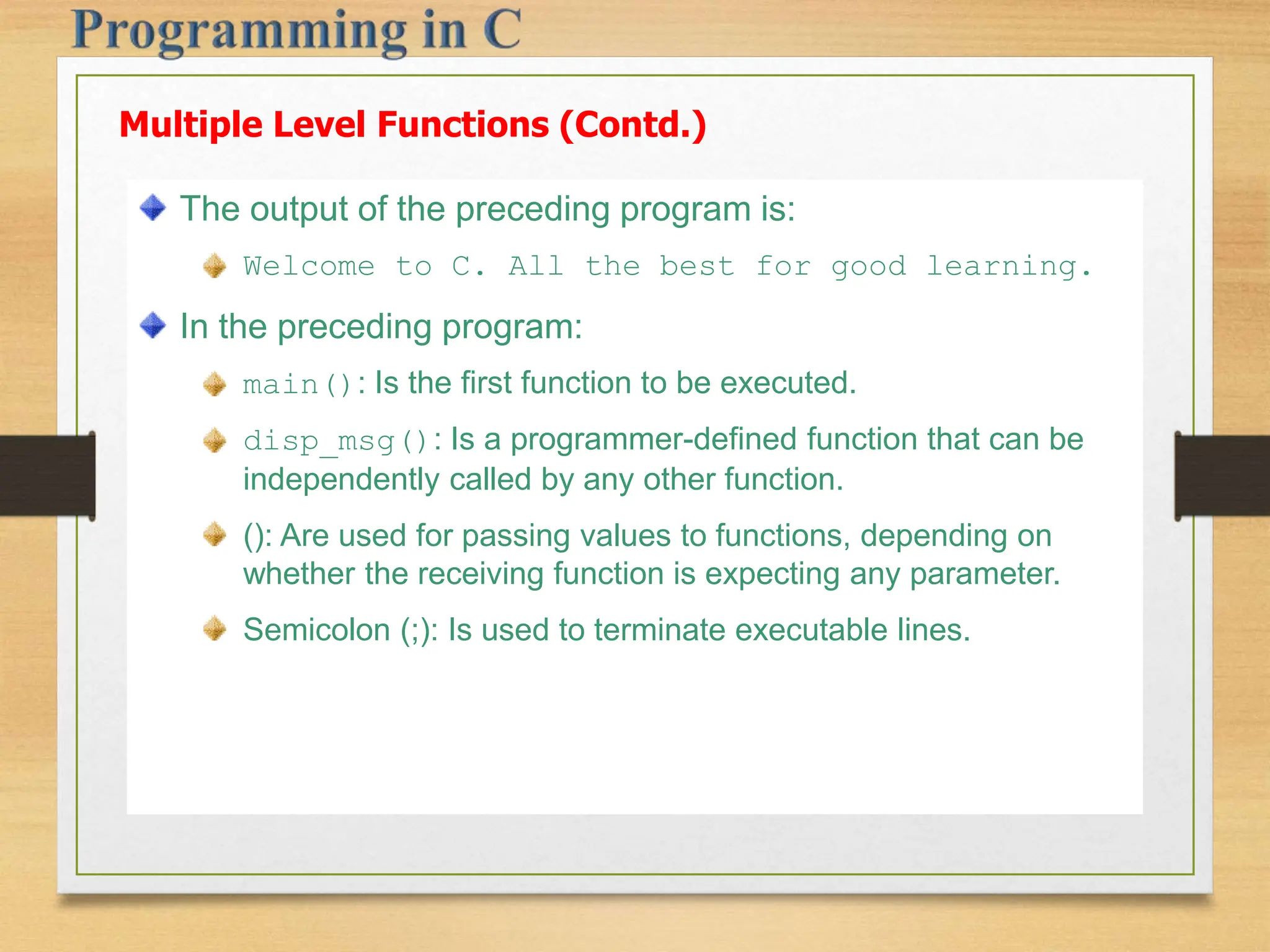
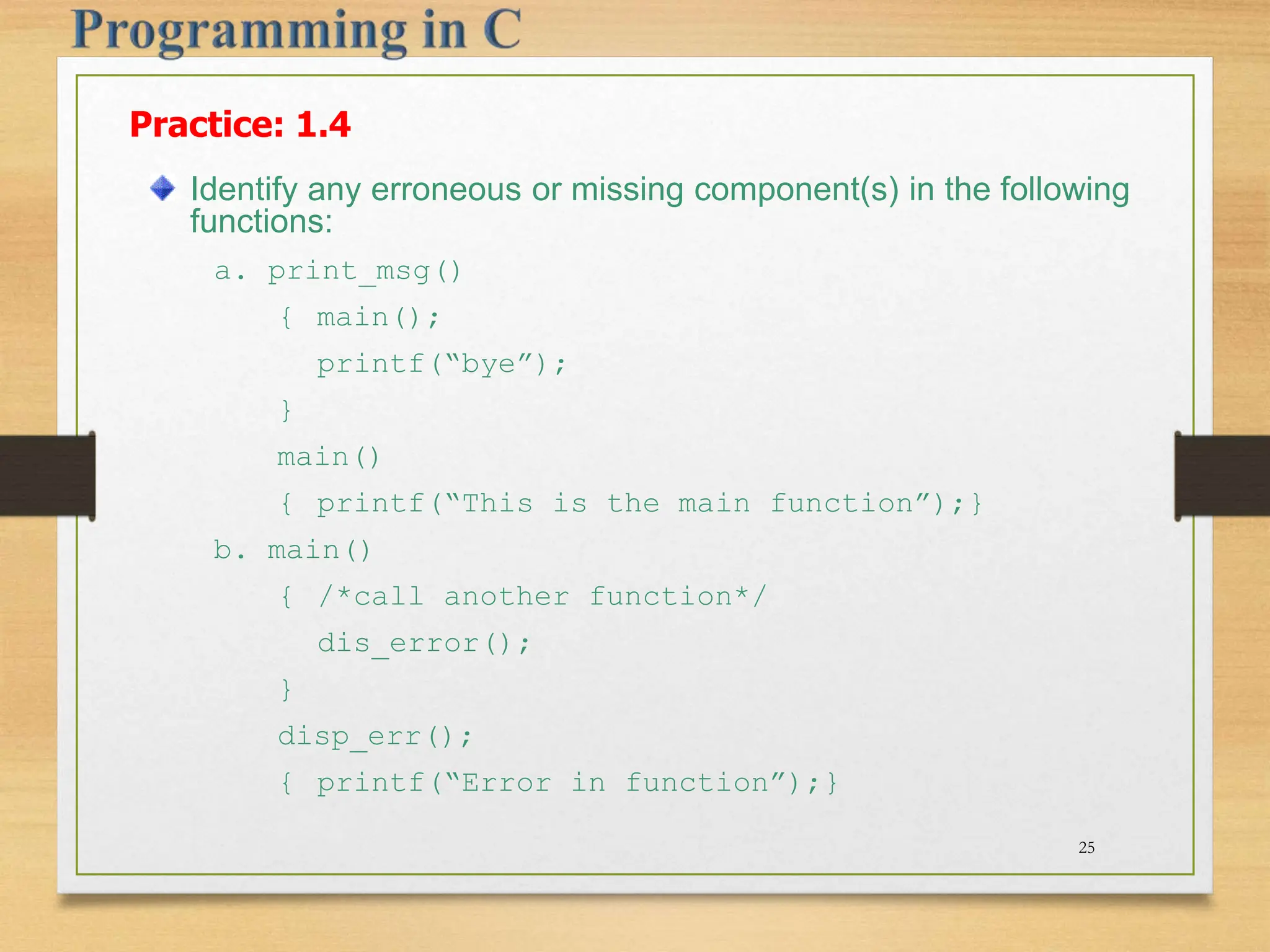
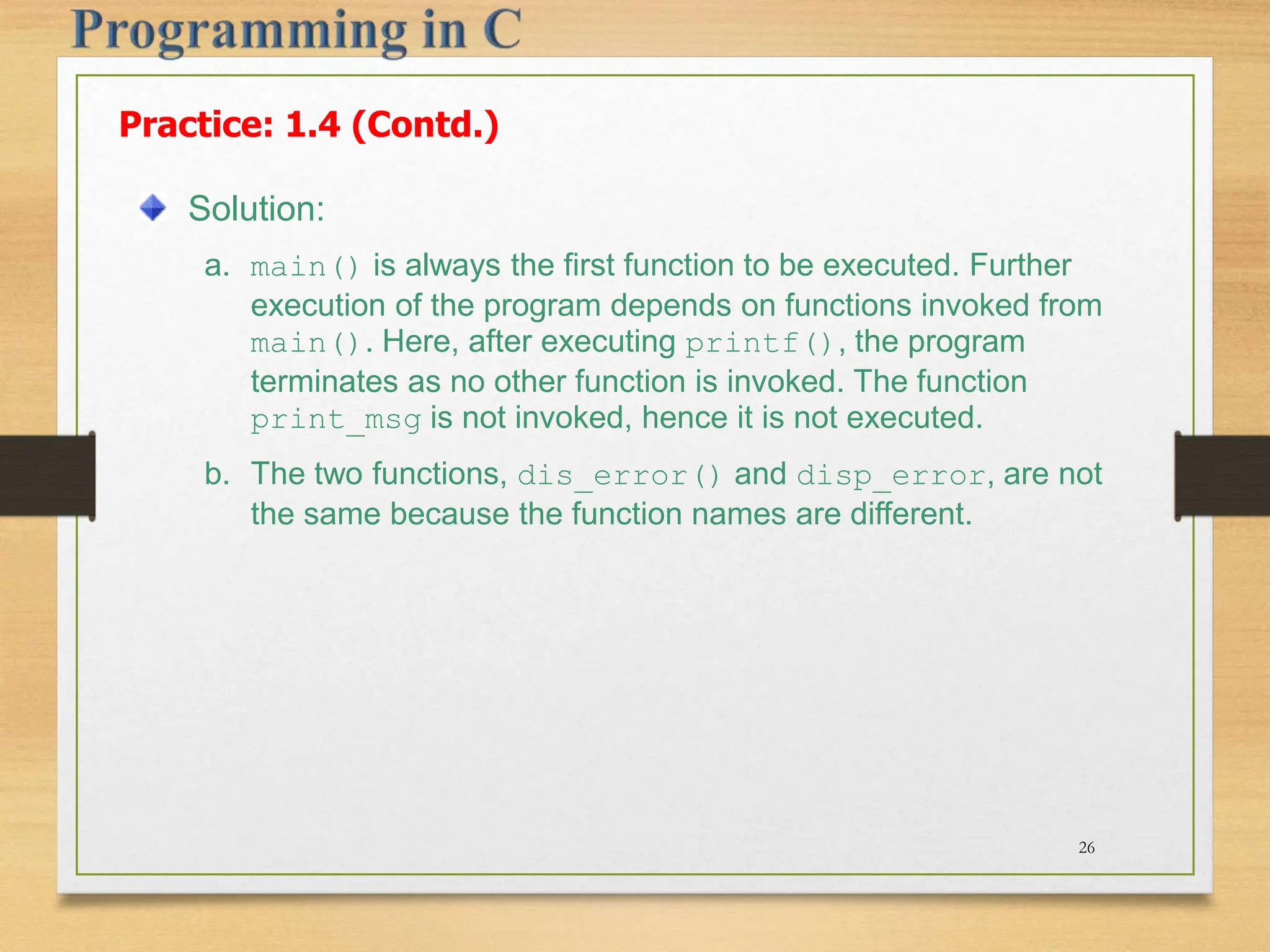
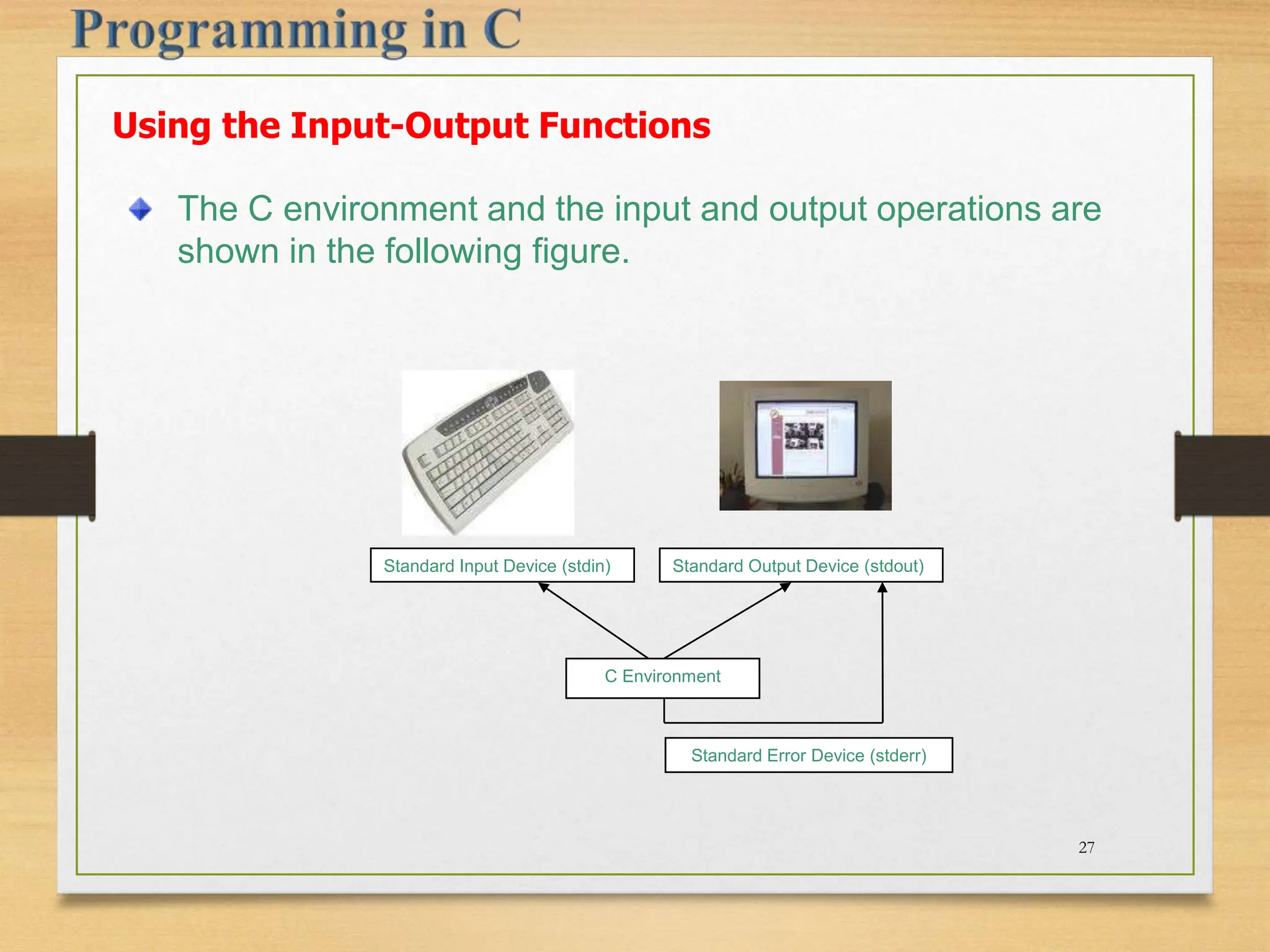

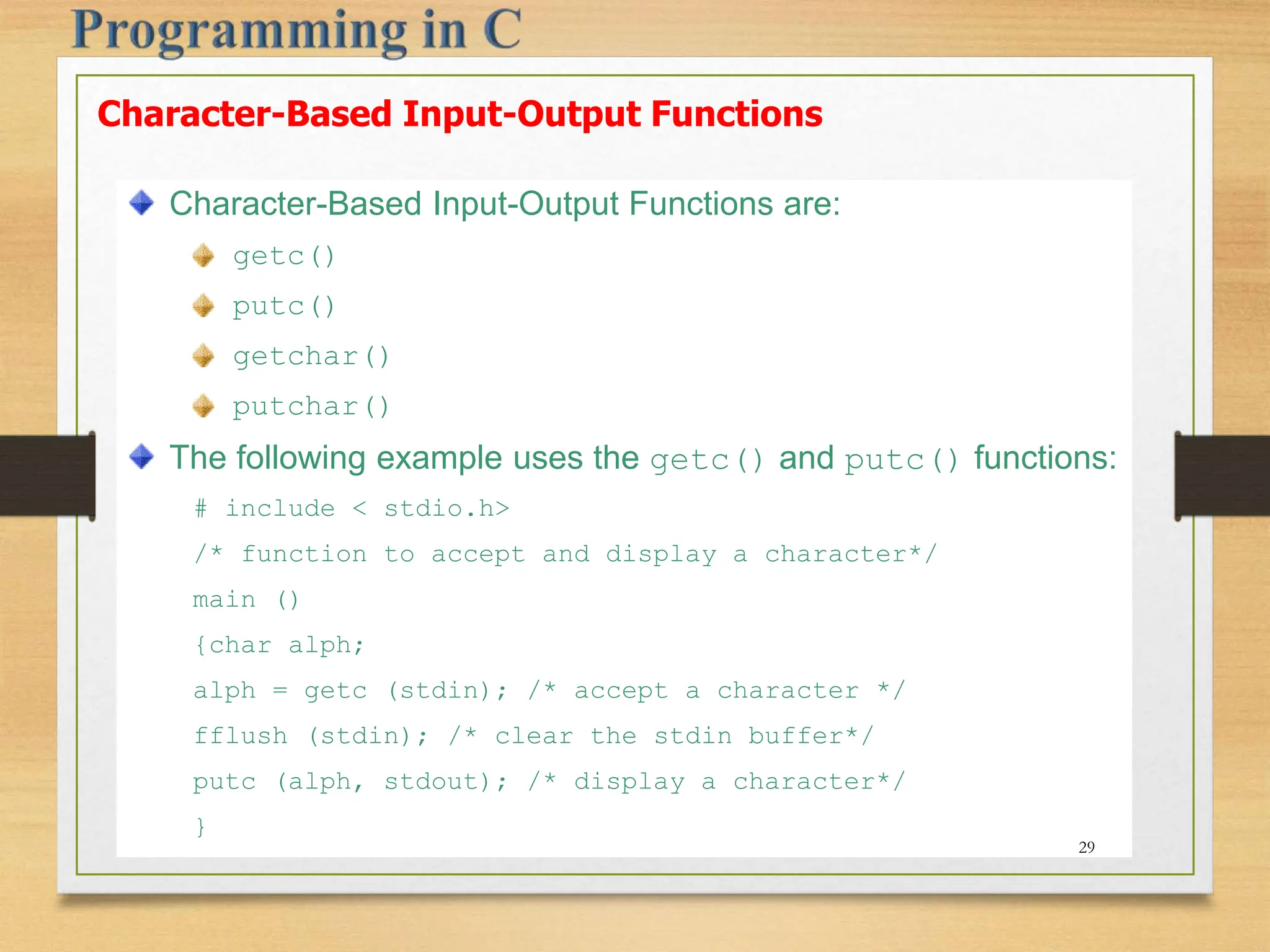
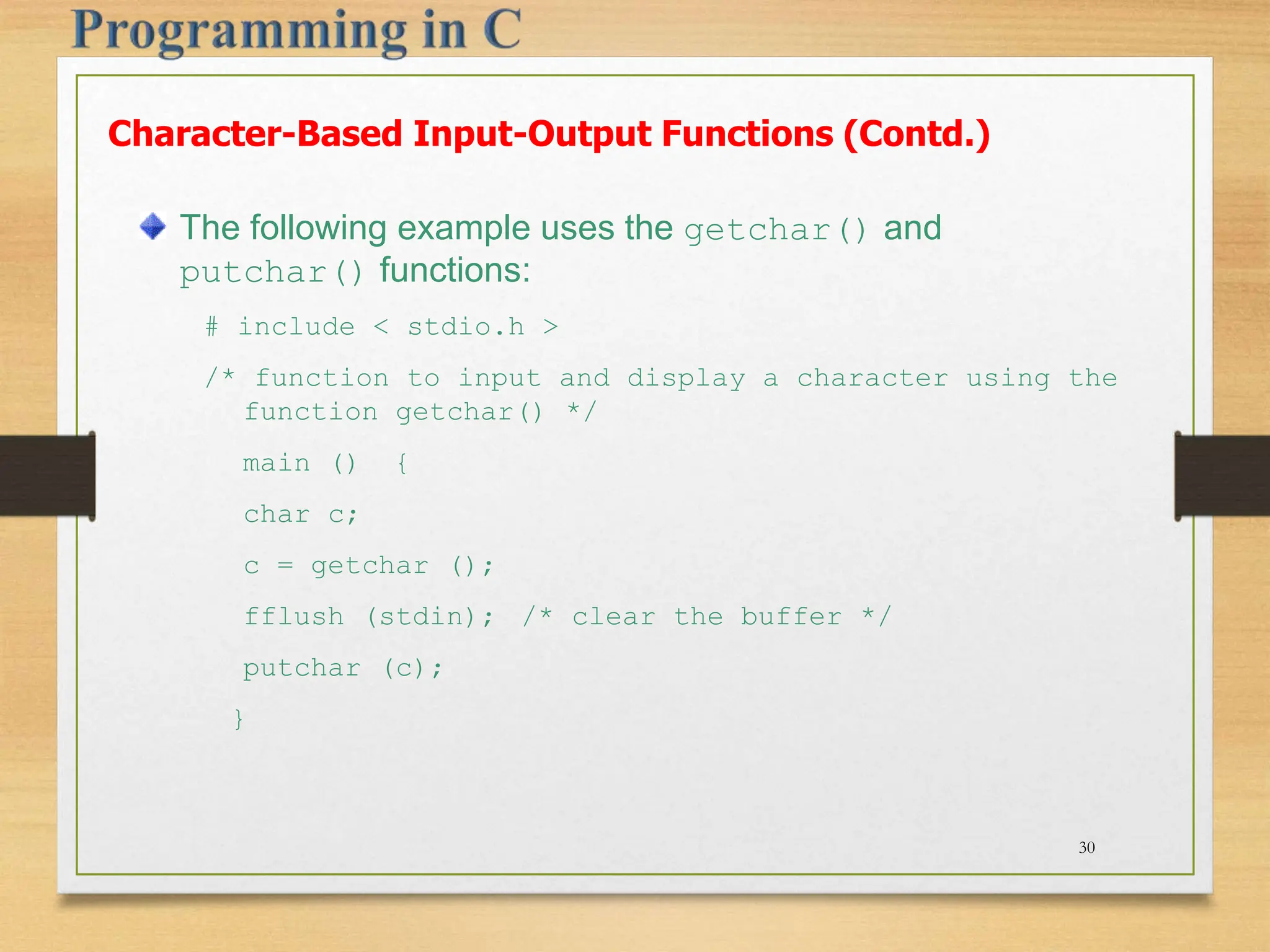
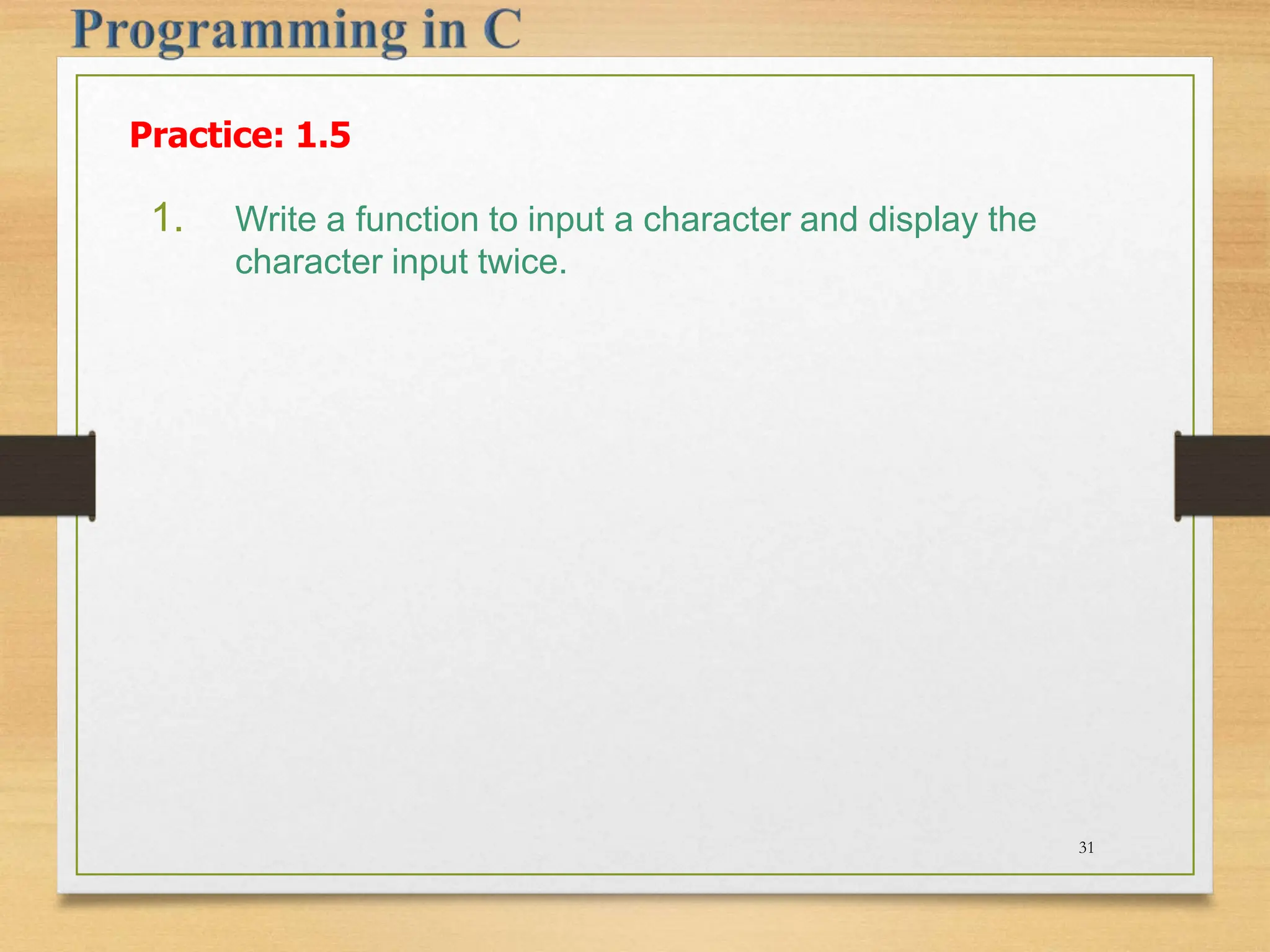
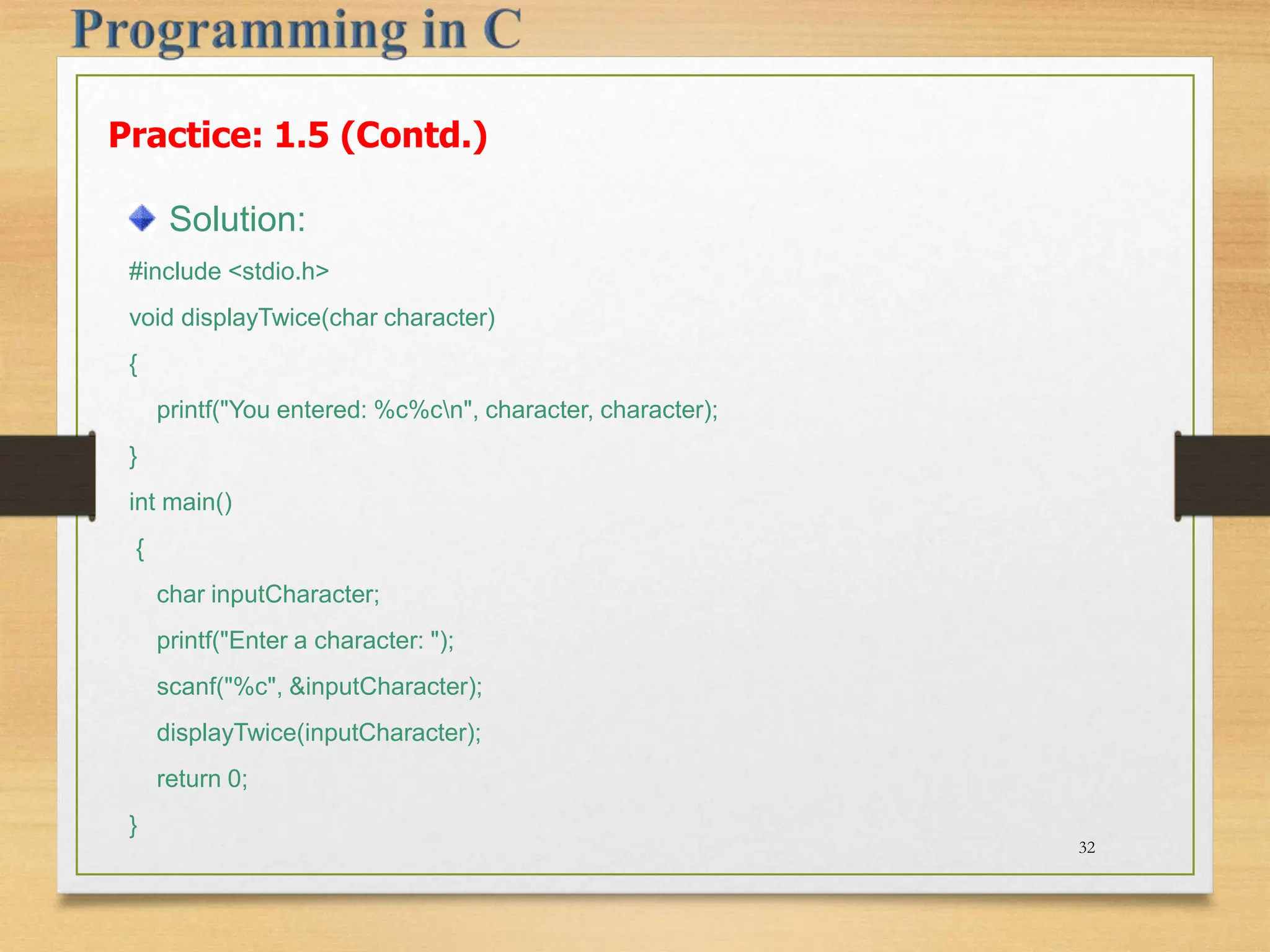
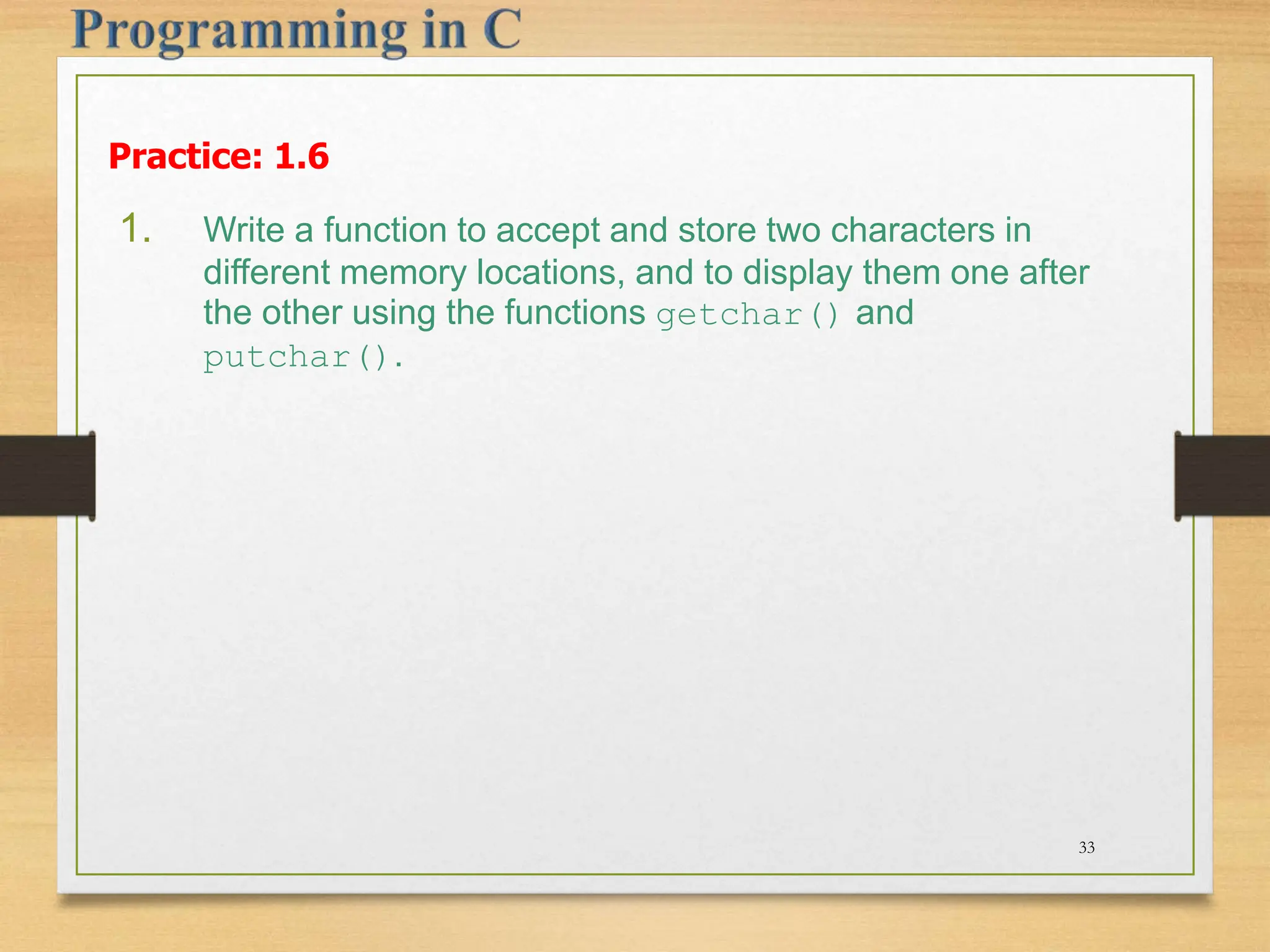
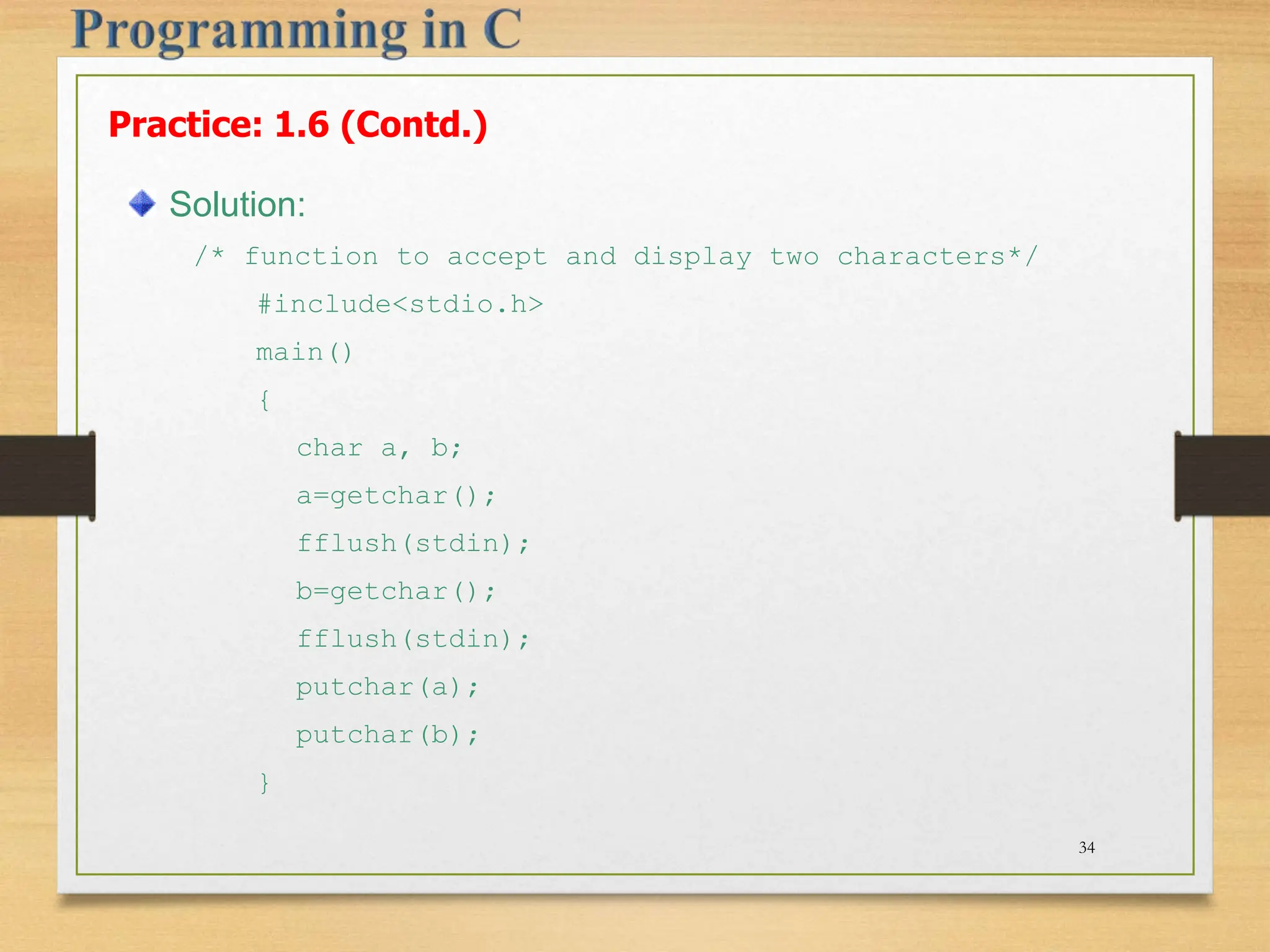
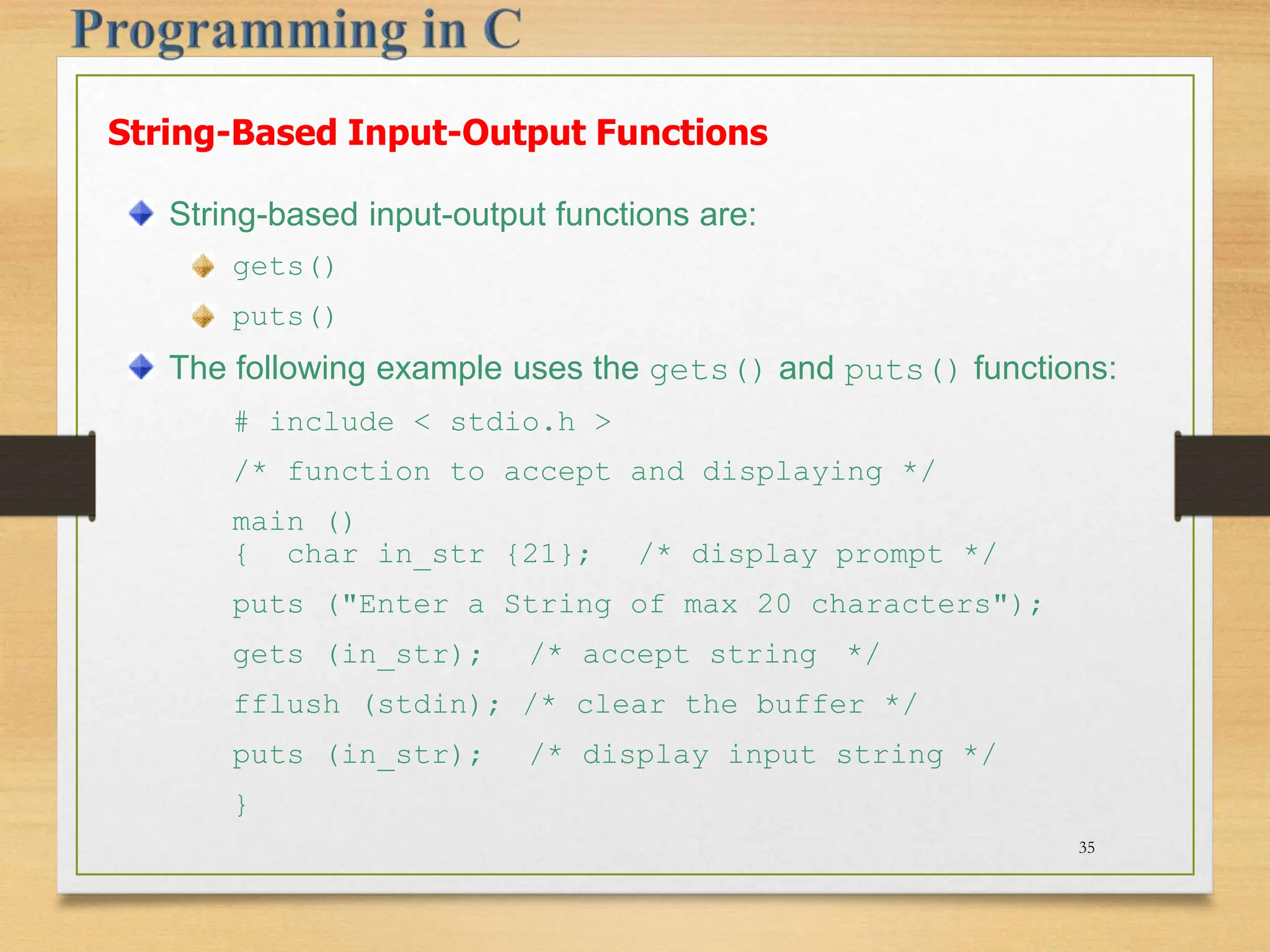
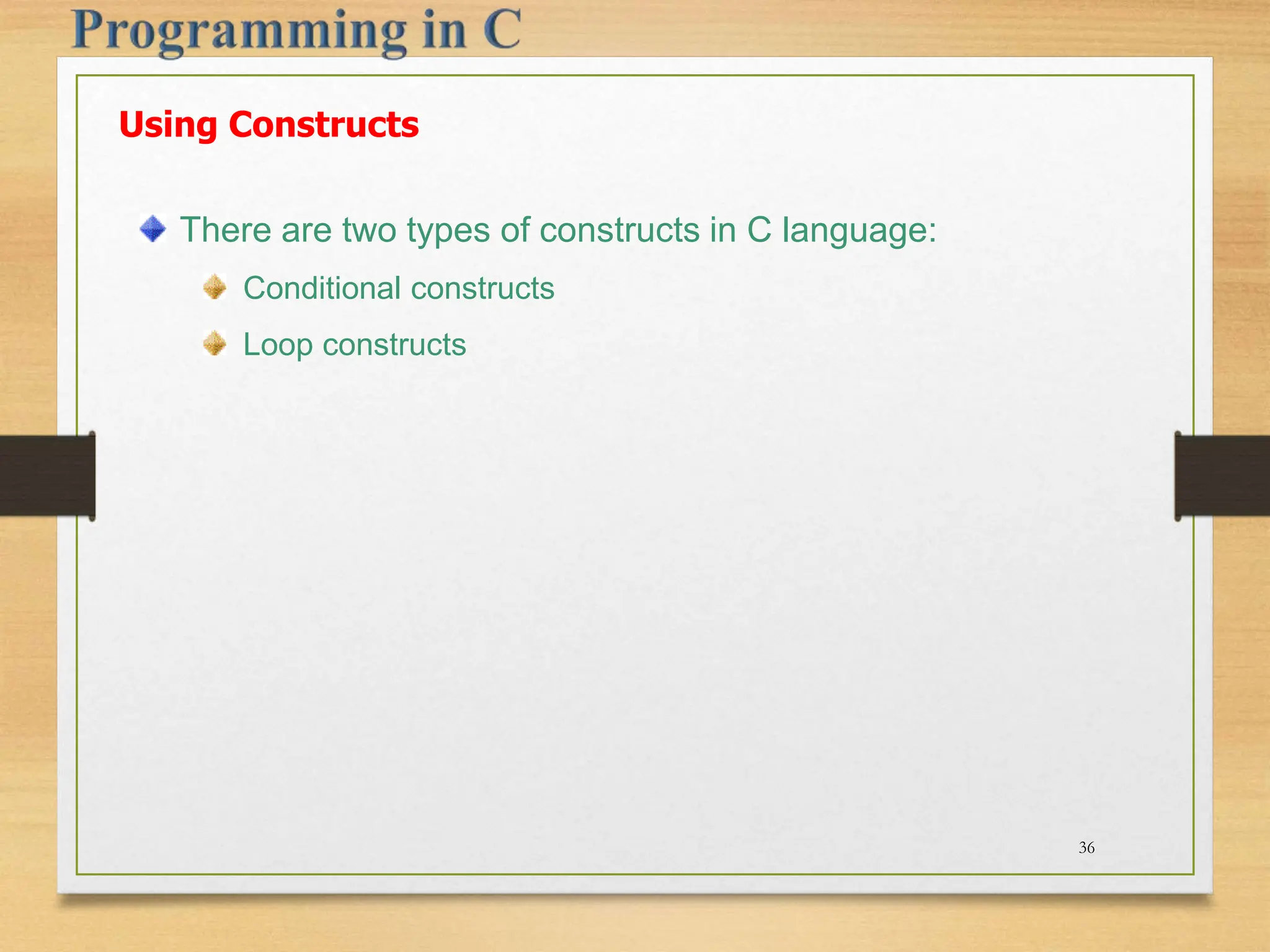
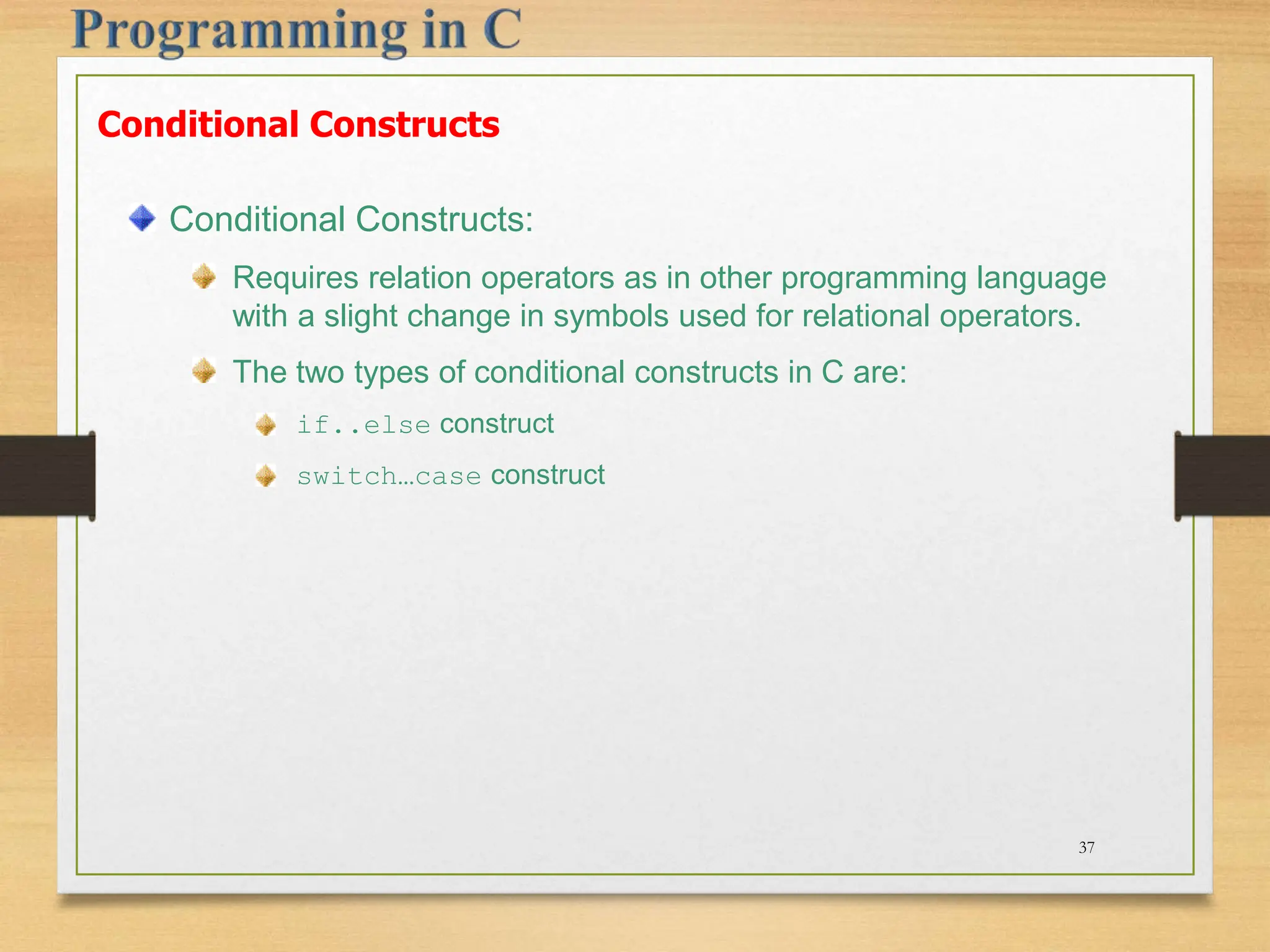
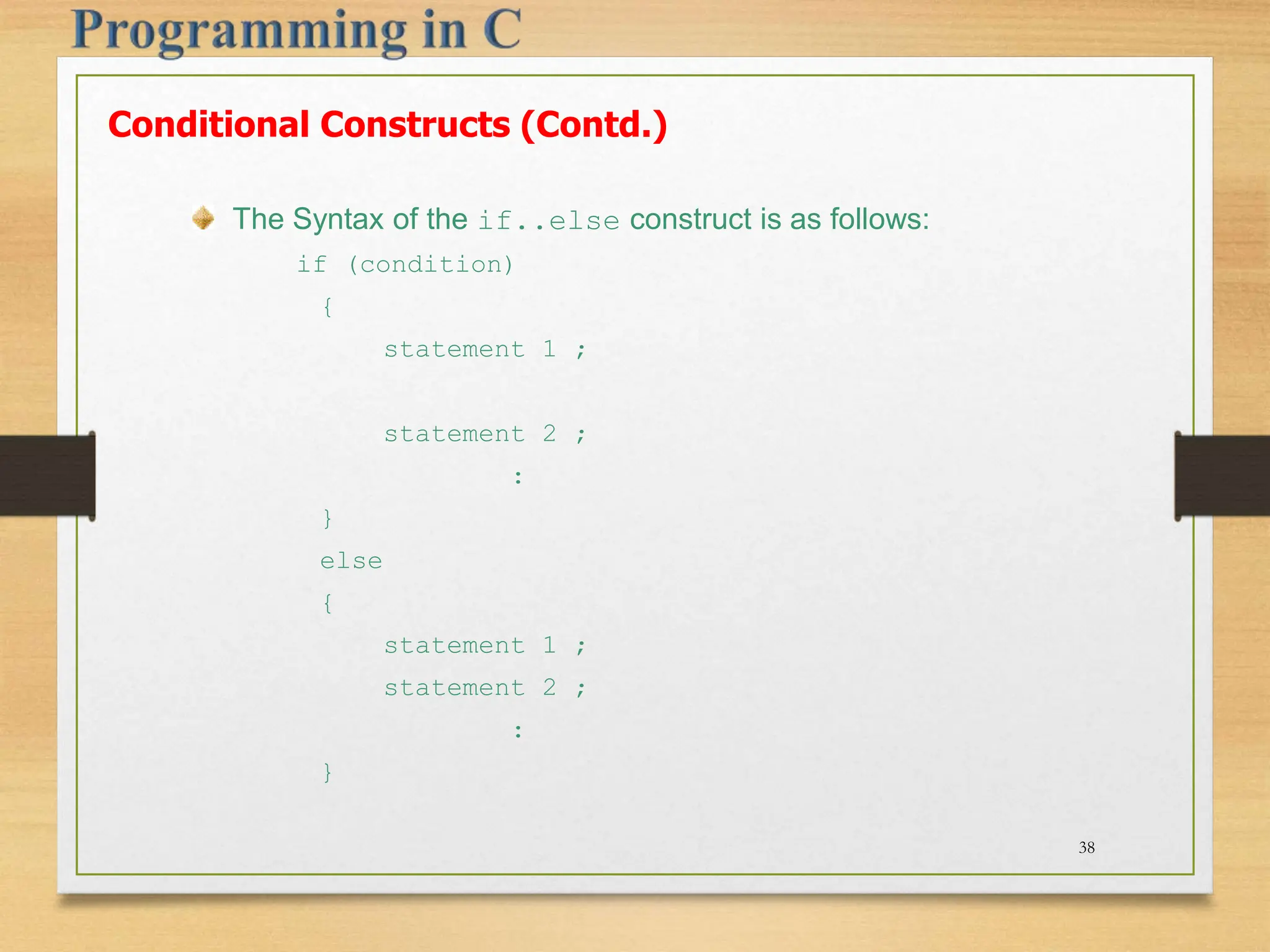
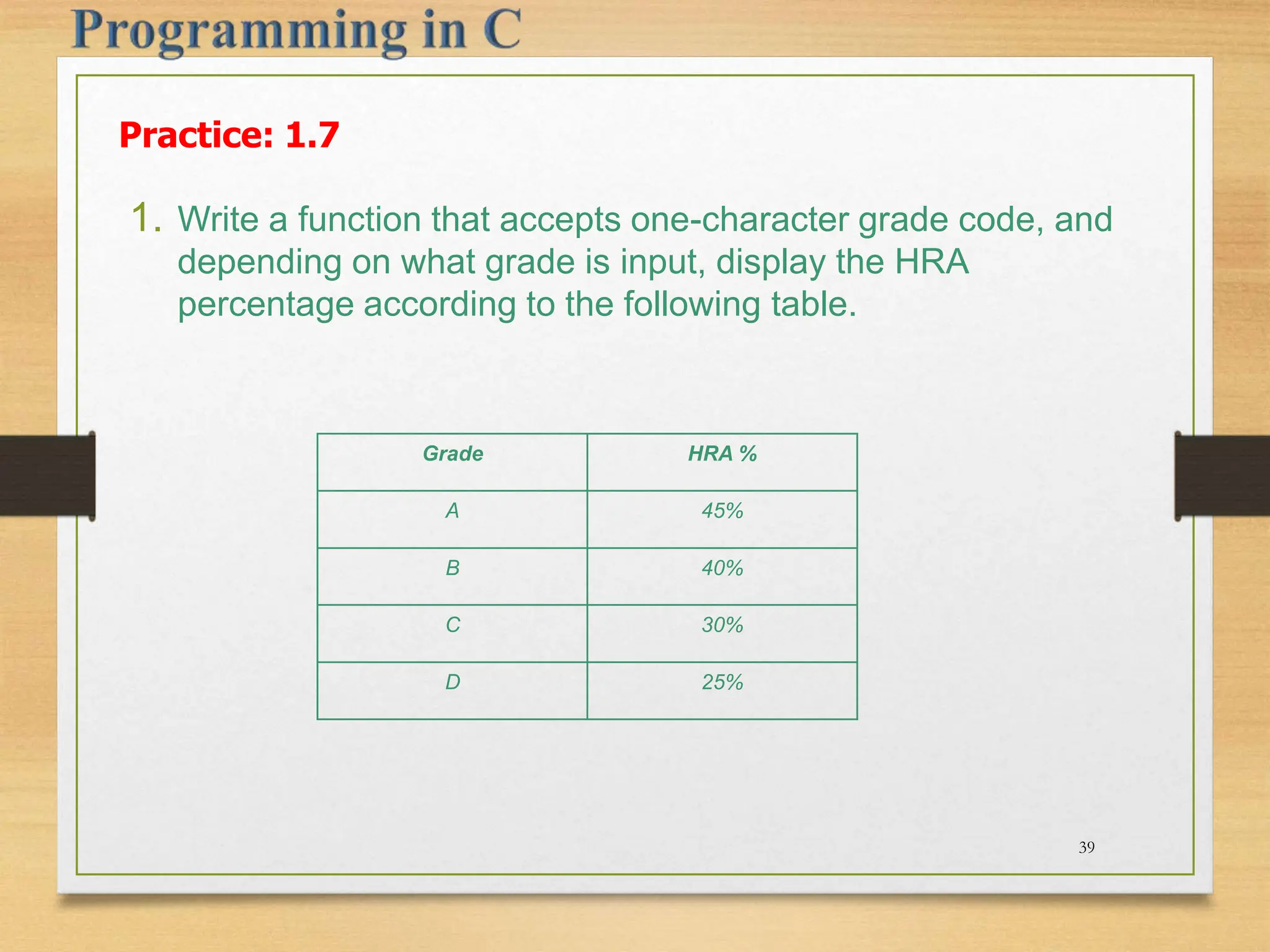
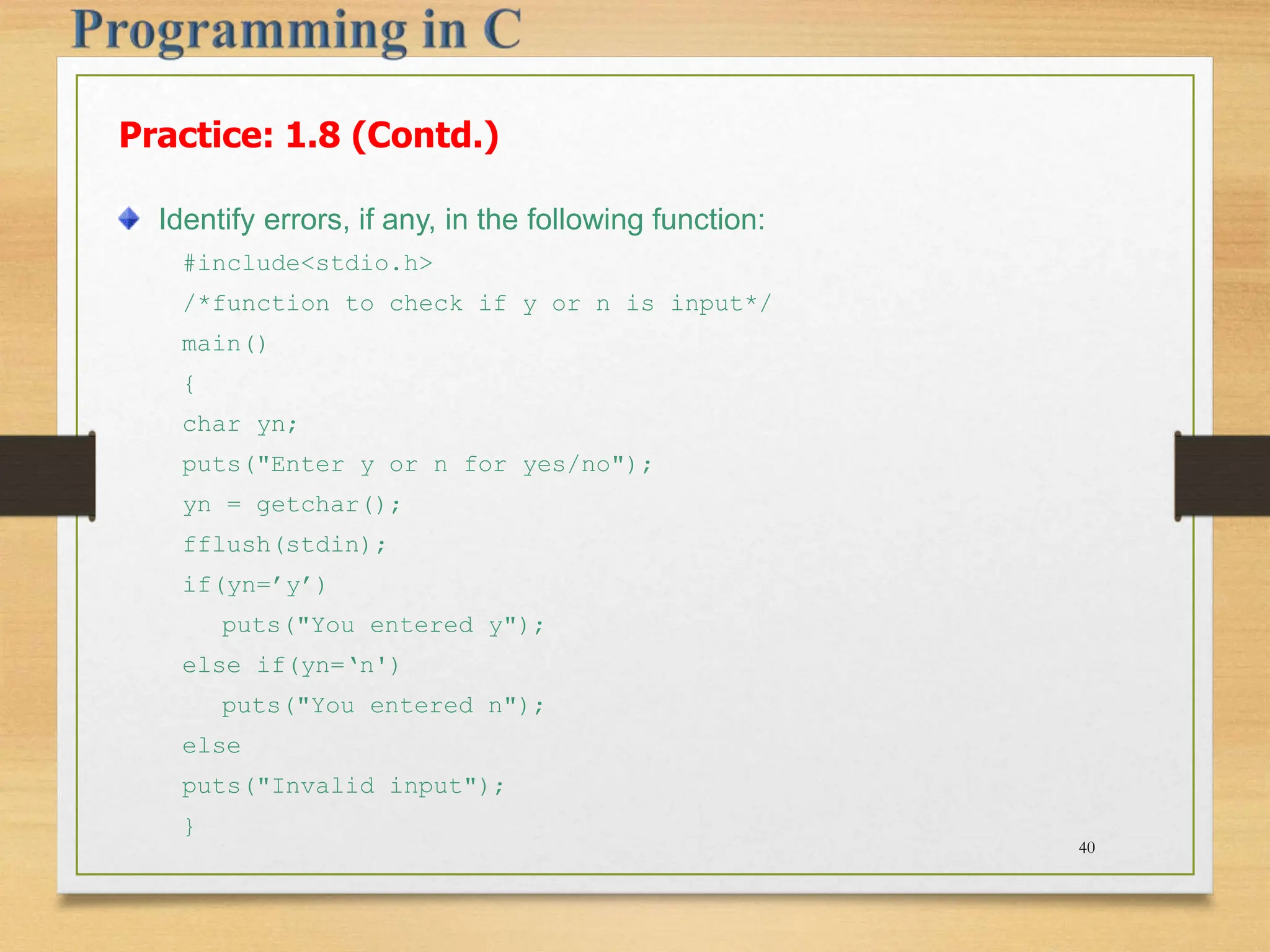
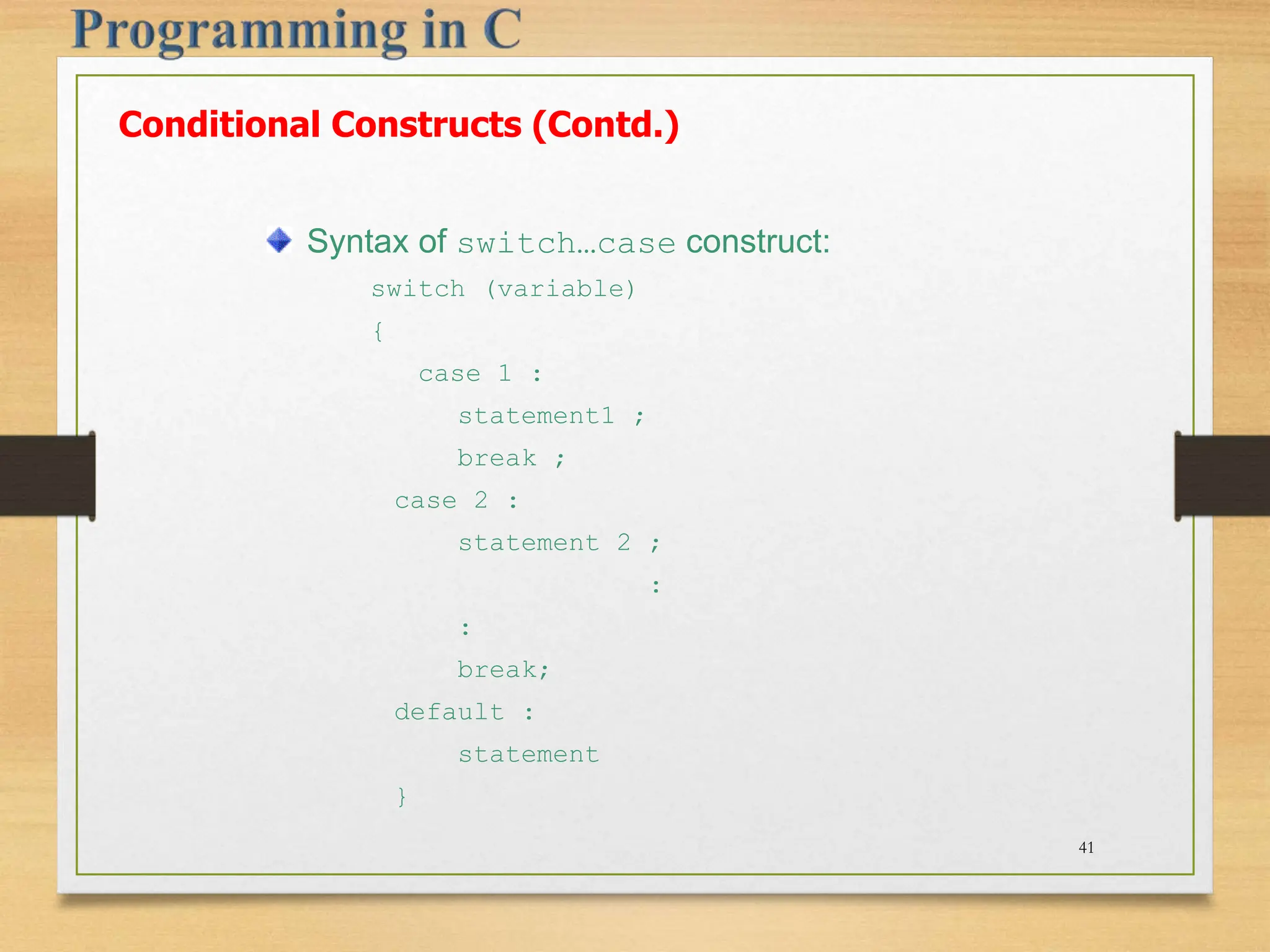
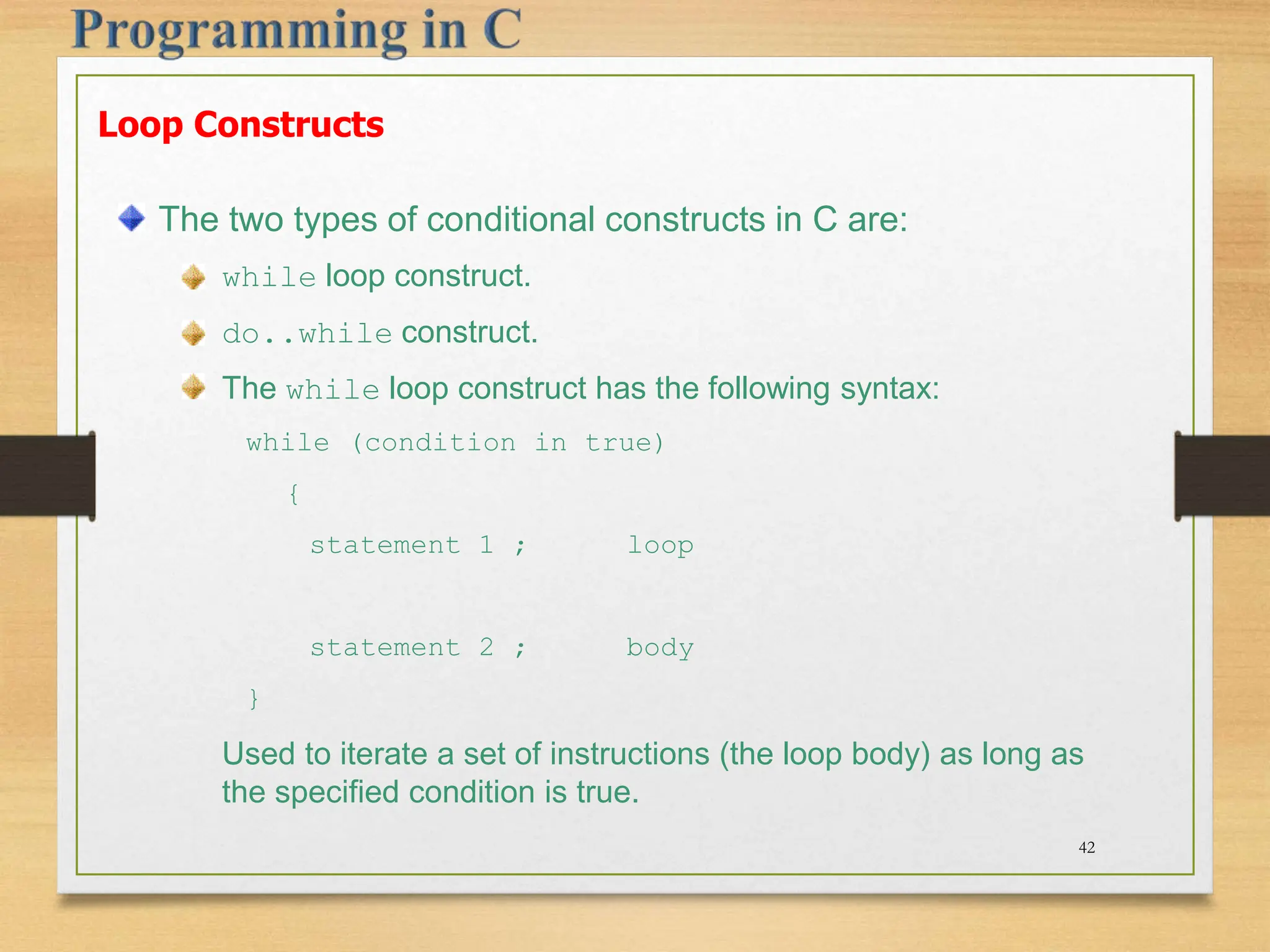
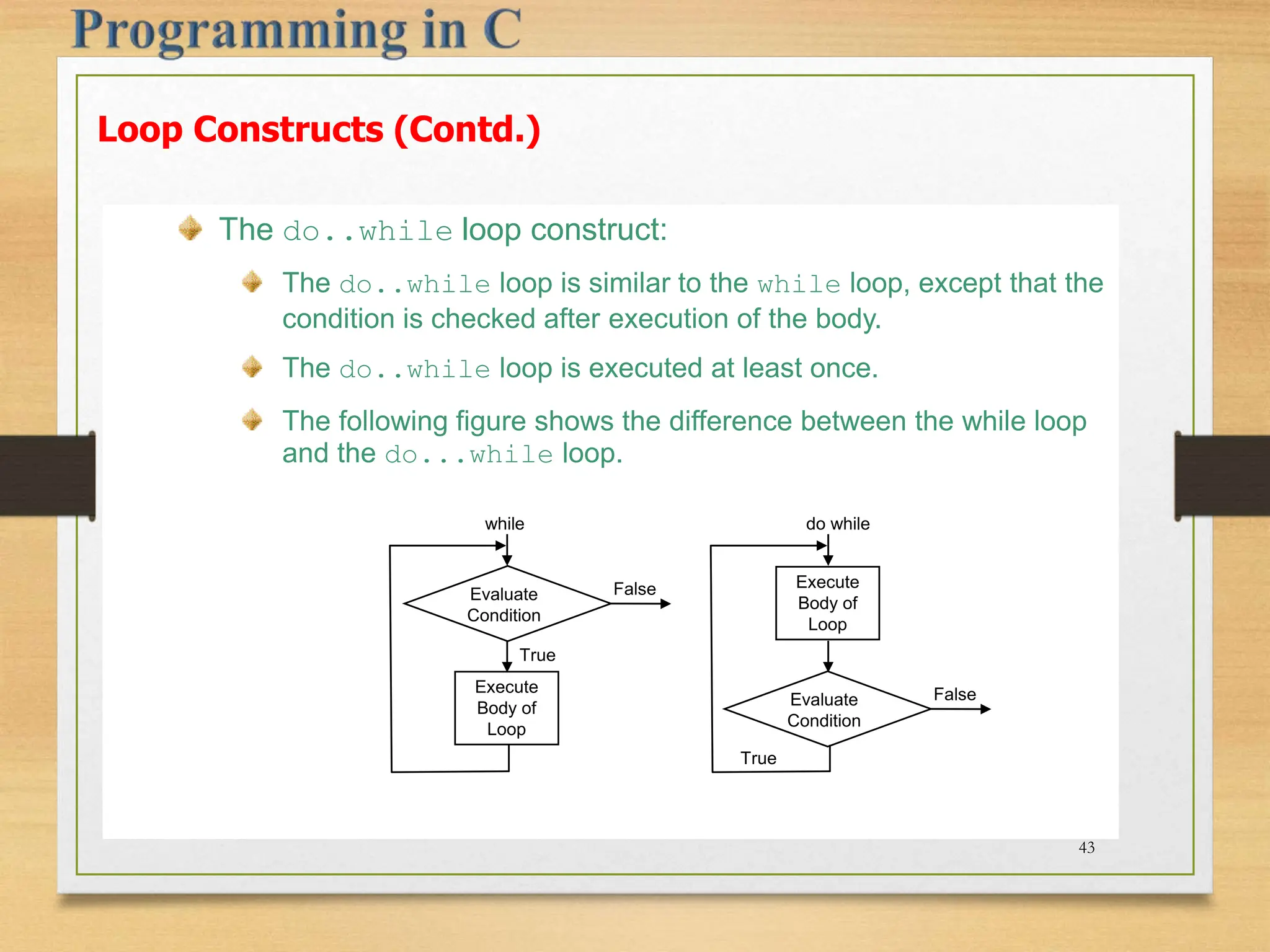
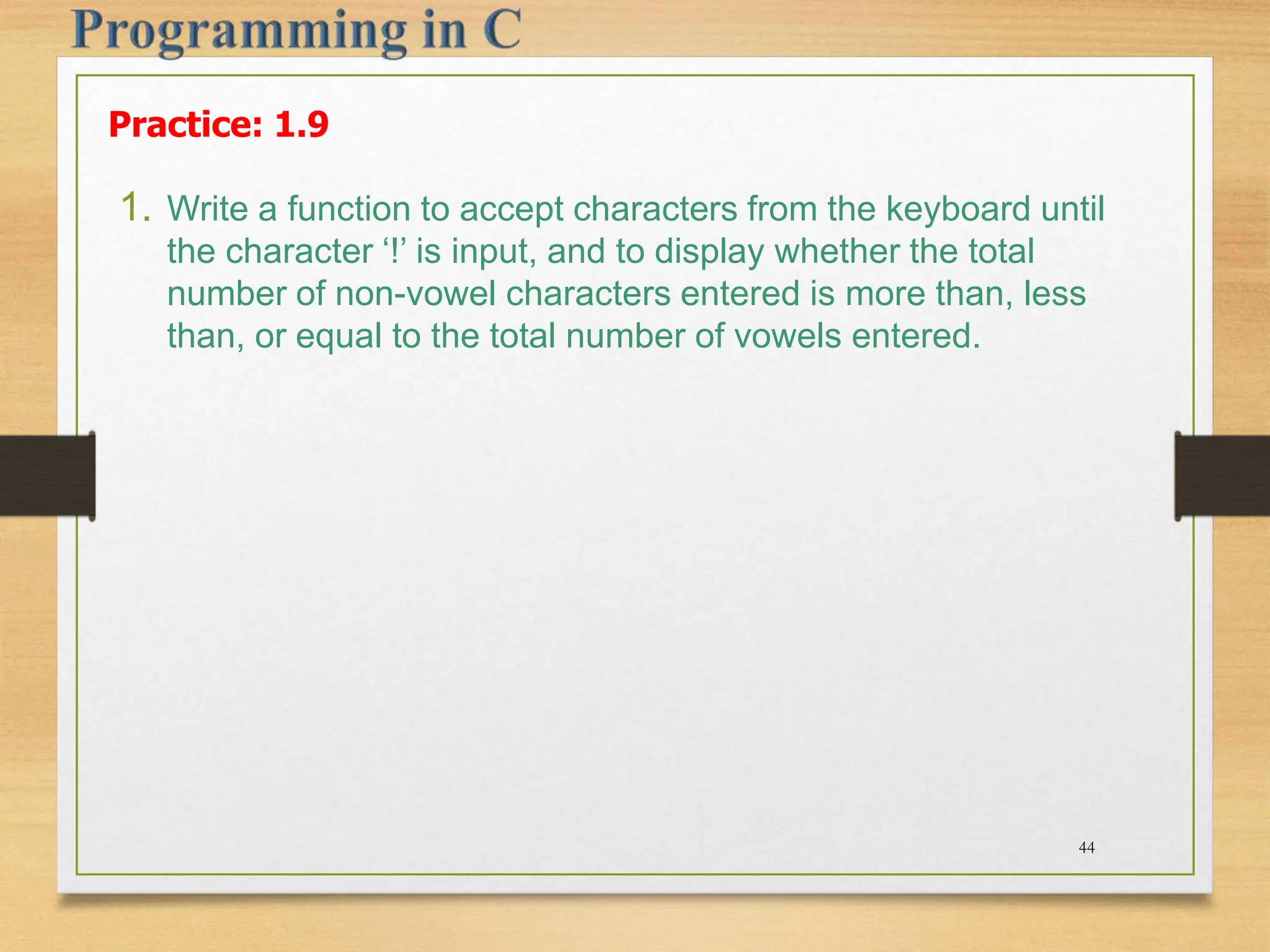
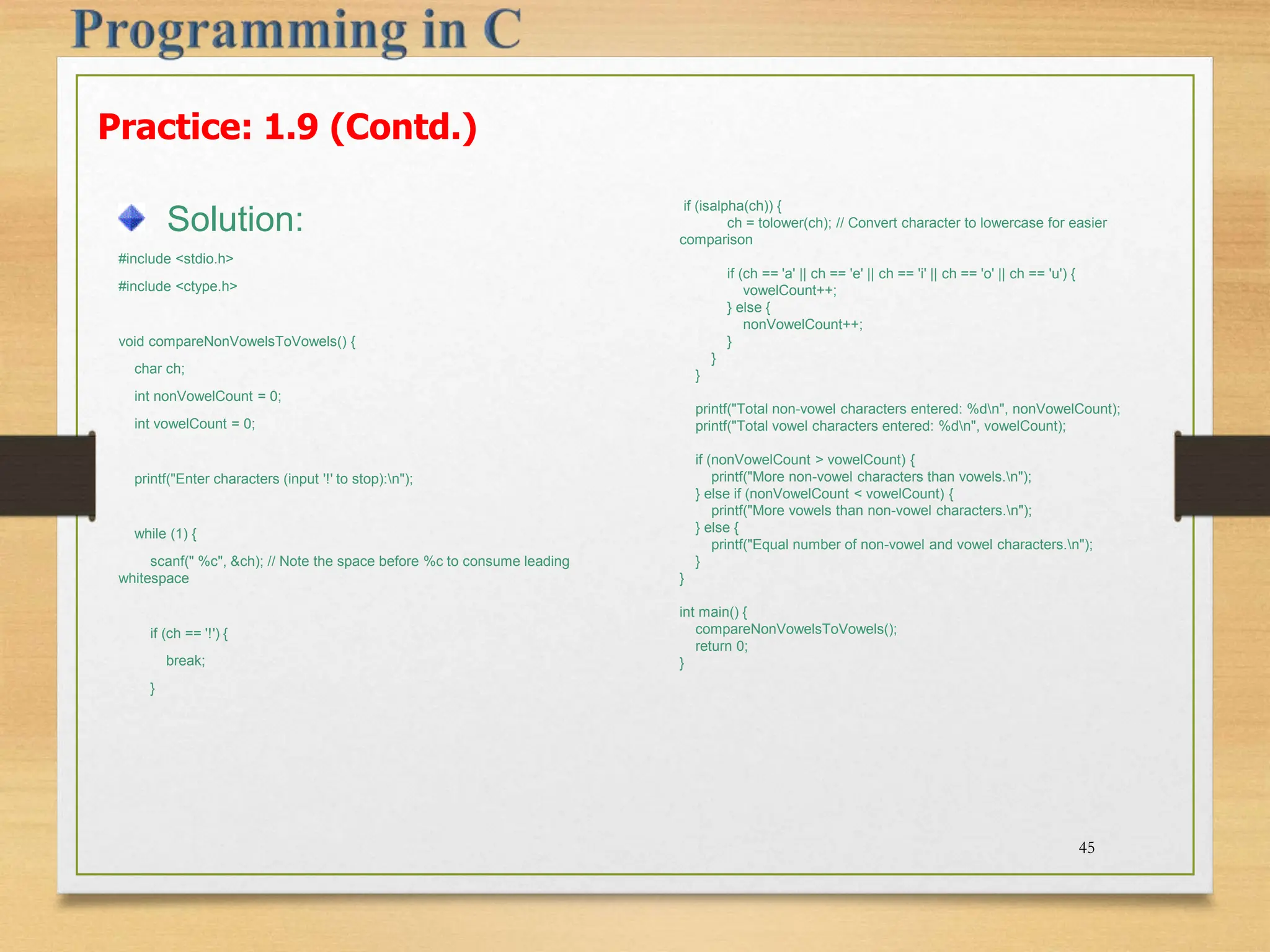
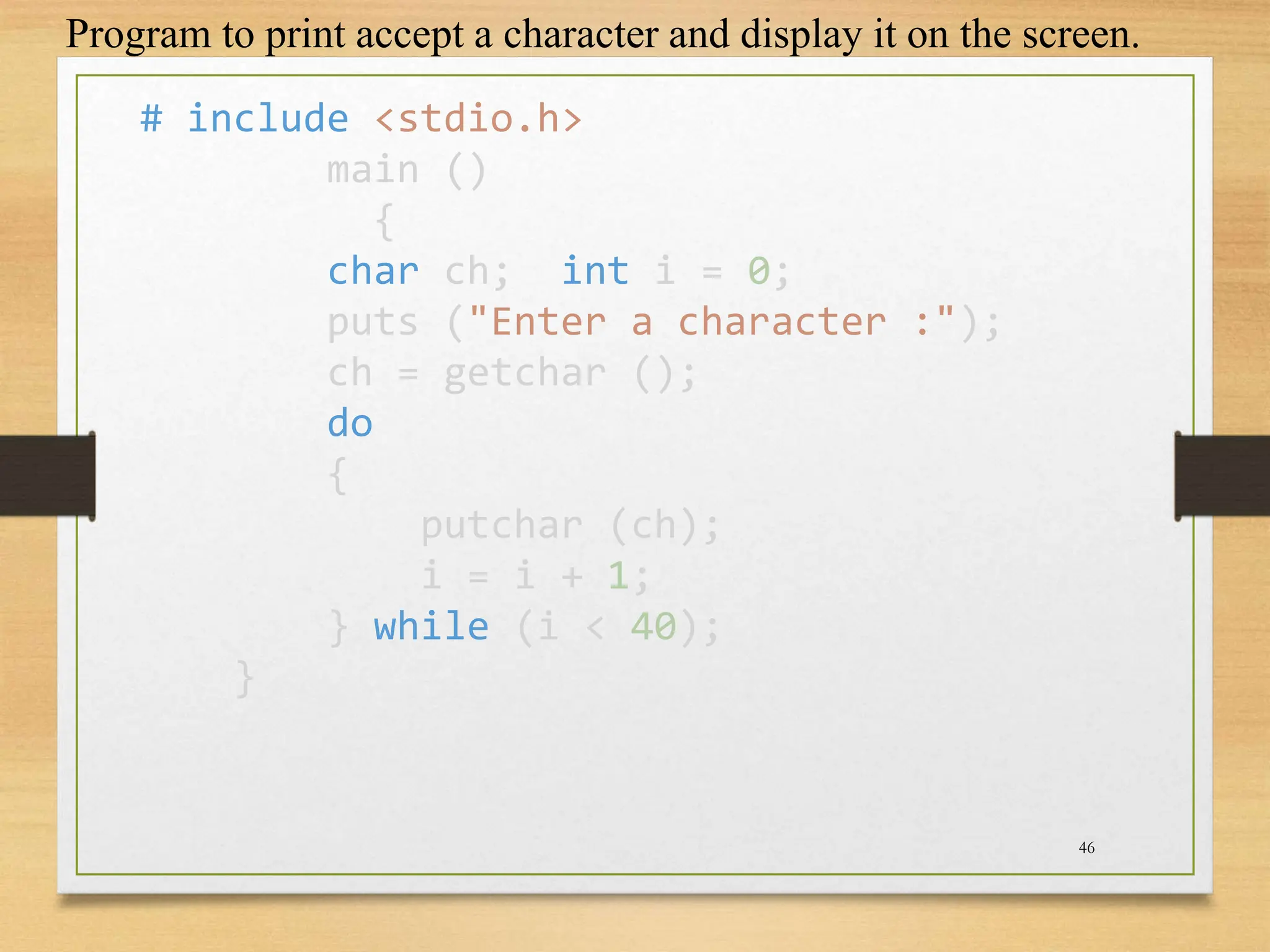
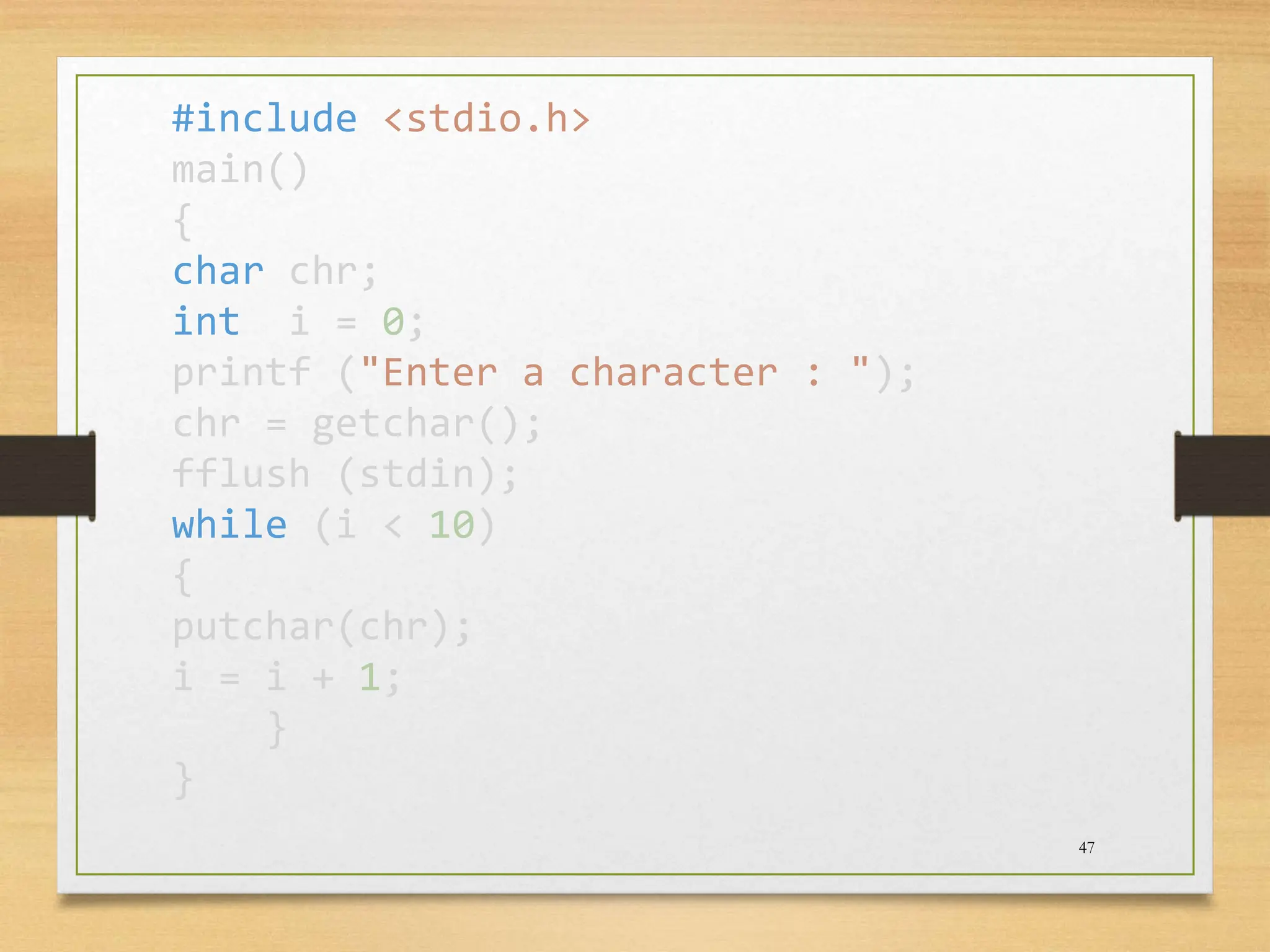
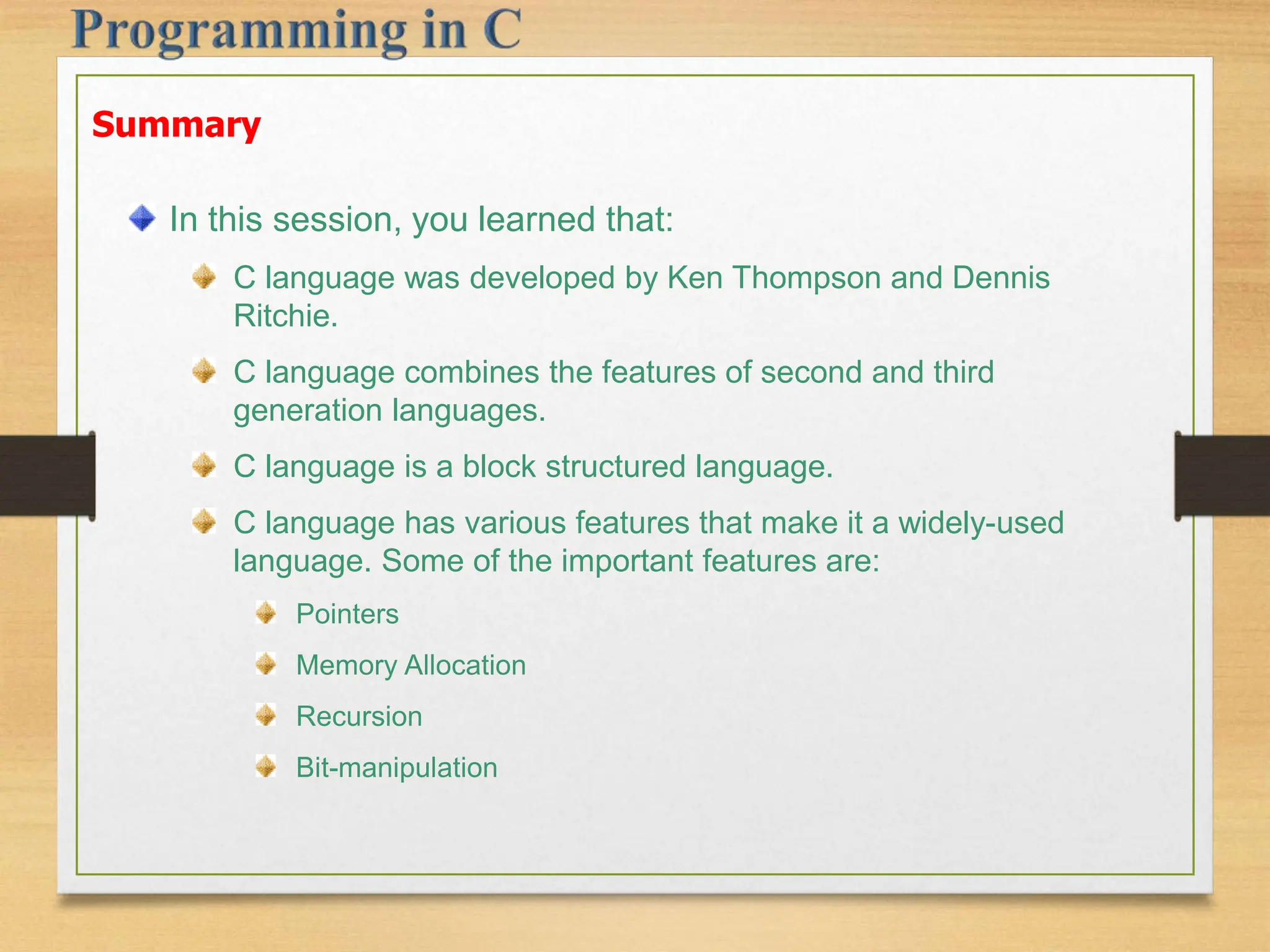
![Summary (Contd.) The types of data structures provided by C can be classified under the following categories: Fundamental data types: Include the data types, which are used for actual data representation in the memory. Derived data types: Are based on fundamental data types. Fundamental data types: char, int, and float Some of the derived data types are: short int, long int, and double float Definition of memory for any data, both fundamental and derived data types, is done in the following format: [data type] [variable name],...; 49](https://image.slidesharecdn.com/session01-240315050309-ecfc5ec5/75/C-Programming-ppt-for-beginners-Introduction-49-2048.jpg)
